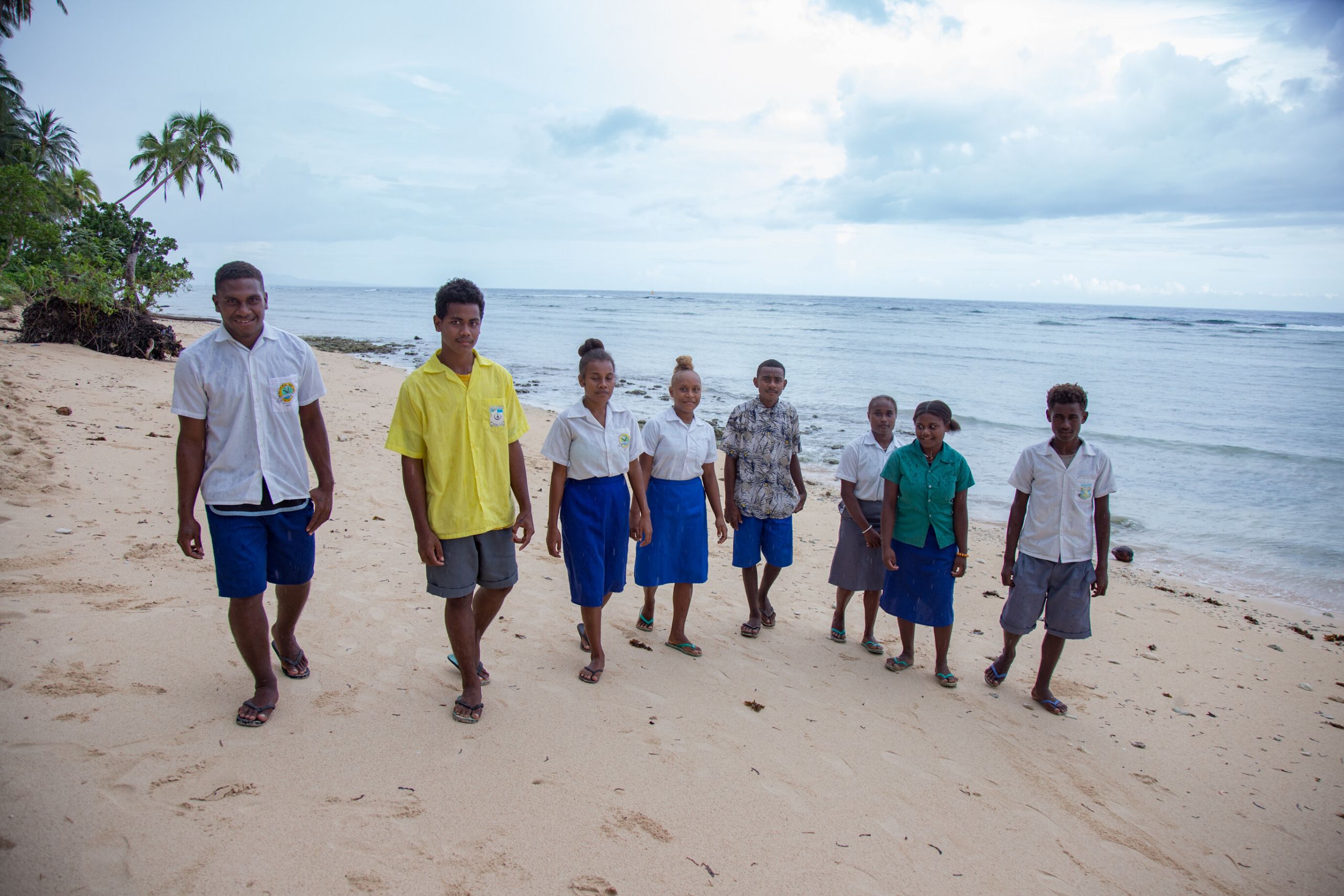NextGen Solomon Islands
Solomon Islands teens tell their stories of the climate emergency
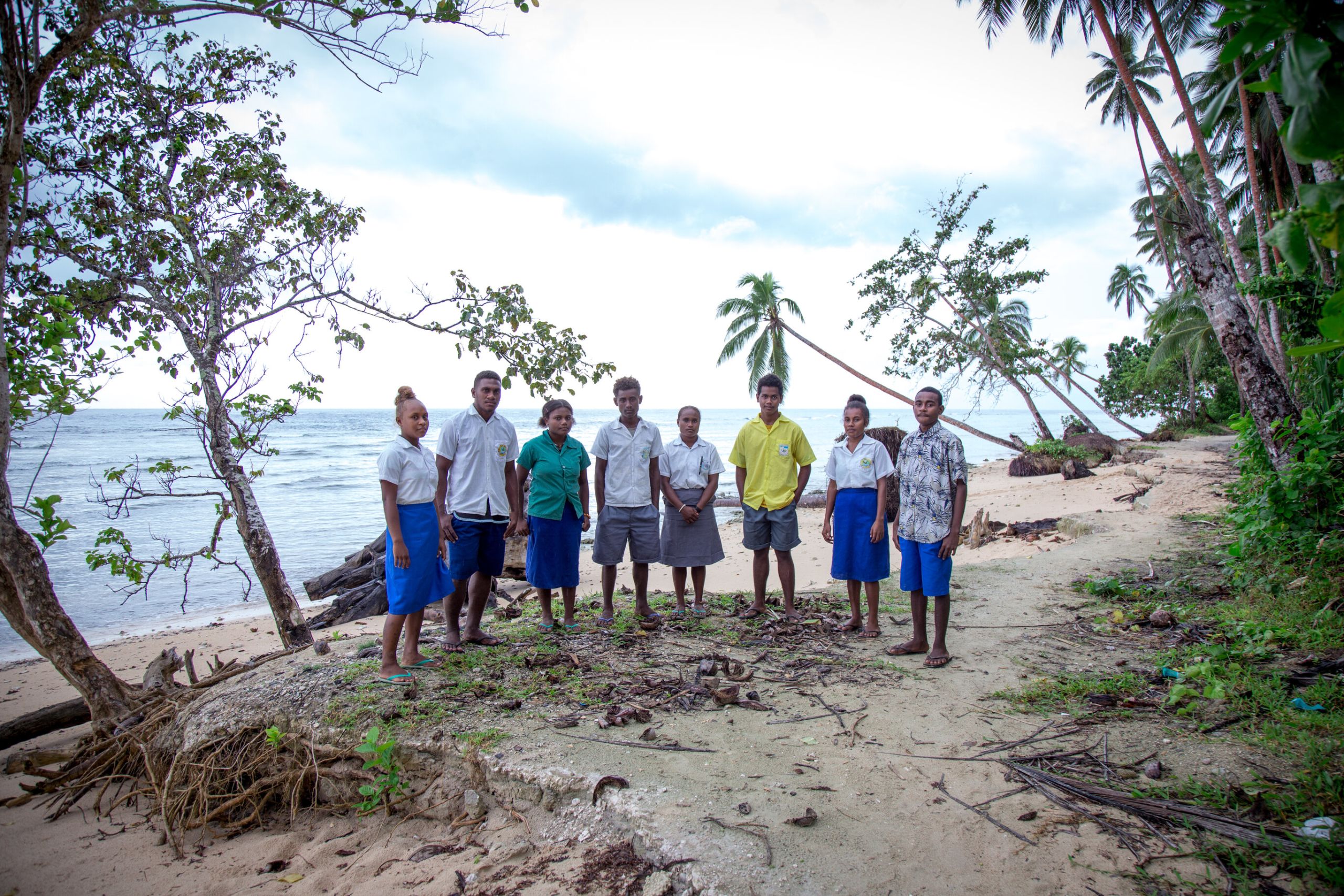
Kale Island in 2009 (Photo by Gladys Habu)
Kale in 2014 (Photo by Gladys Habu)
The Daily Mirror has been working with eight teenagers from the Solomon Islands, empowering them to tell their stories about the climate emergency.
From left to right, meet Ian Rodie, 19, Junior Kevin, 17, Corrine Roina, 17, Cinderella Sia, 15, Timothy Windbreak, 15, Diana Gelina, 15, Jerma Batzy, 15, and Mathew Toli, 16*
They live on Malaita province in the Solomon Islands located in the South Pacific.
In their own words, they write how their lives have been affected by rising sea levels, flash flooding and cyclones and the impact this has upon their health and education.
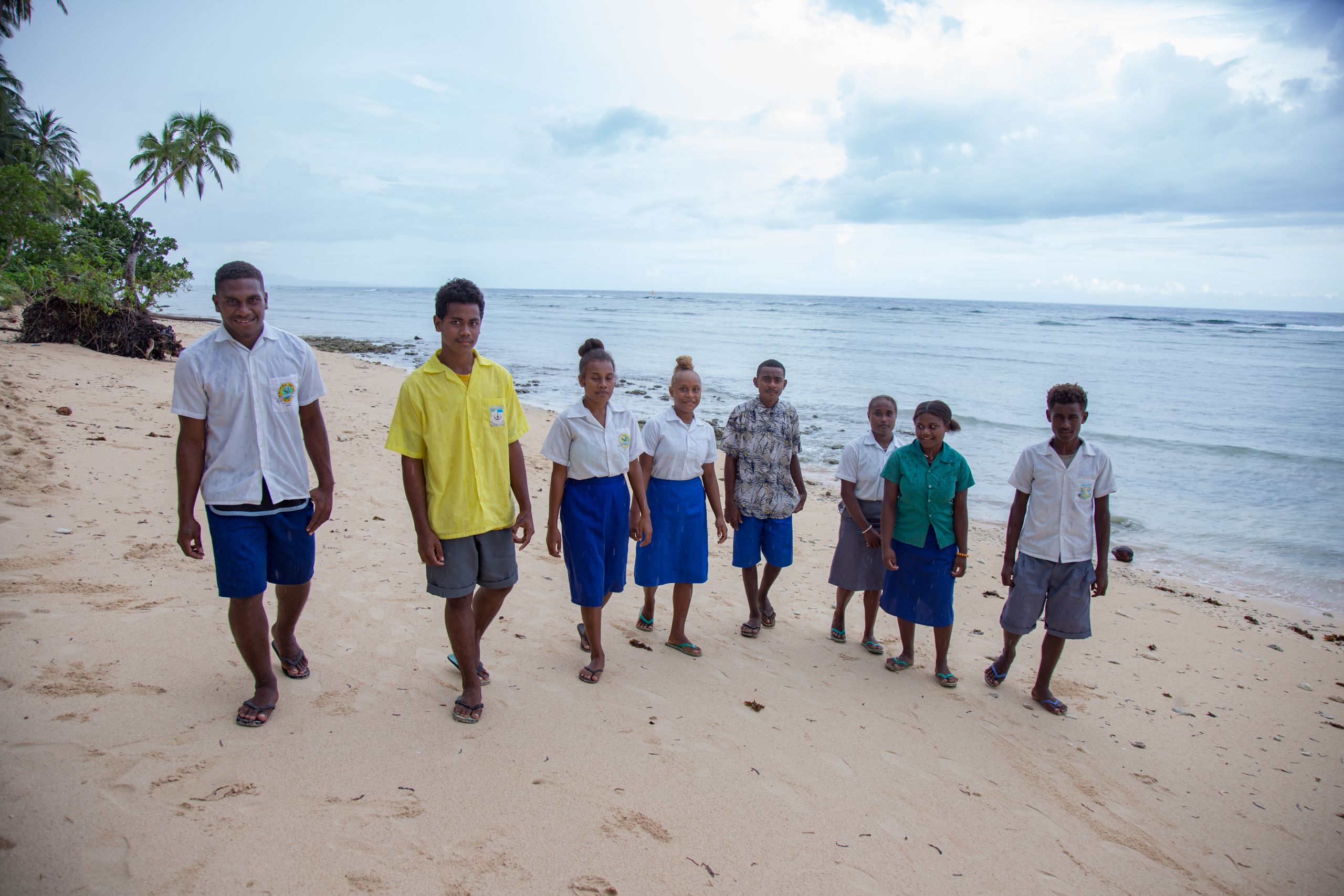
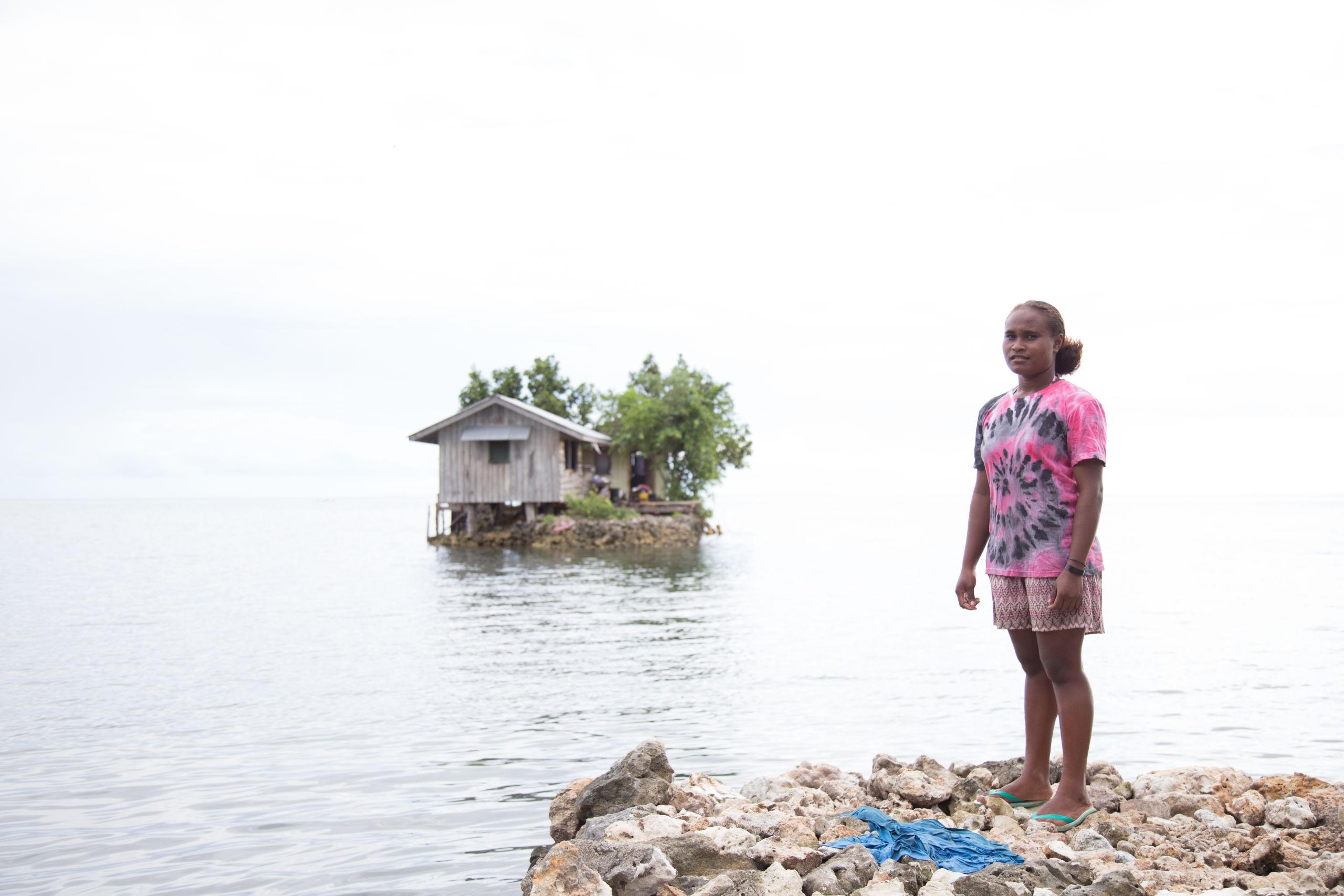
Diana Gelina, 15, stands by the sea at low tide with an artificial island in the background
Diana Gelina, 15, stands by the sea at low tide with an artificial island in the background
"Climate change is making our islands uninhabitable. If nothing is done, this will result in climate refugees who have no place to seek shelter."
By Diana Gelina, 15
I come from a small coastal village in the Solomon Islands.
Climate change and sea level rise is one of the biggest problems for my community and my family.
Our home is 16 meters from the seashore. My school is also near the sea. Every year, during December and January, there are very high tides.
This year, there were high tides during May and June as well.
The sea rose much higher than normal and flooded my home, our small vegetable garden, and our fruit trees.
It also went into the freshwater wells that we had dug to collect water for washing and swimming. They were full of saltwater.
I was so angry because the sea carries so much debris. During the flood, this went around our house and we had to clean up the mess.
Now, my family is worried. We have nowhere to go. Moving to higher ground would lead to disputes with the people who currently live there. Instead, we have to face staying here.
Sometimes the path to my school is flooded. My friends, my siblings and I have to walk through saltwater filled with rubbish that has been washed up by the waves.
When the school grounds are too flooded, our teachers send us back home. Missing lessons makes me sad.
At other times of the year, the temperature gets really hot. When this happens our plants die and the fruits on our trees no longer taste sweet.
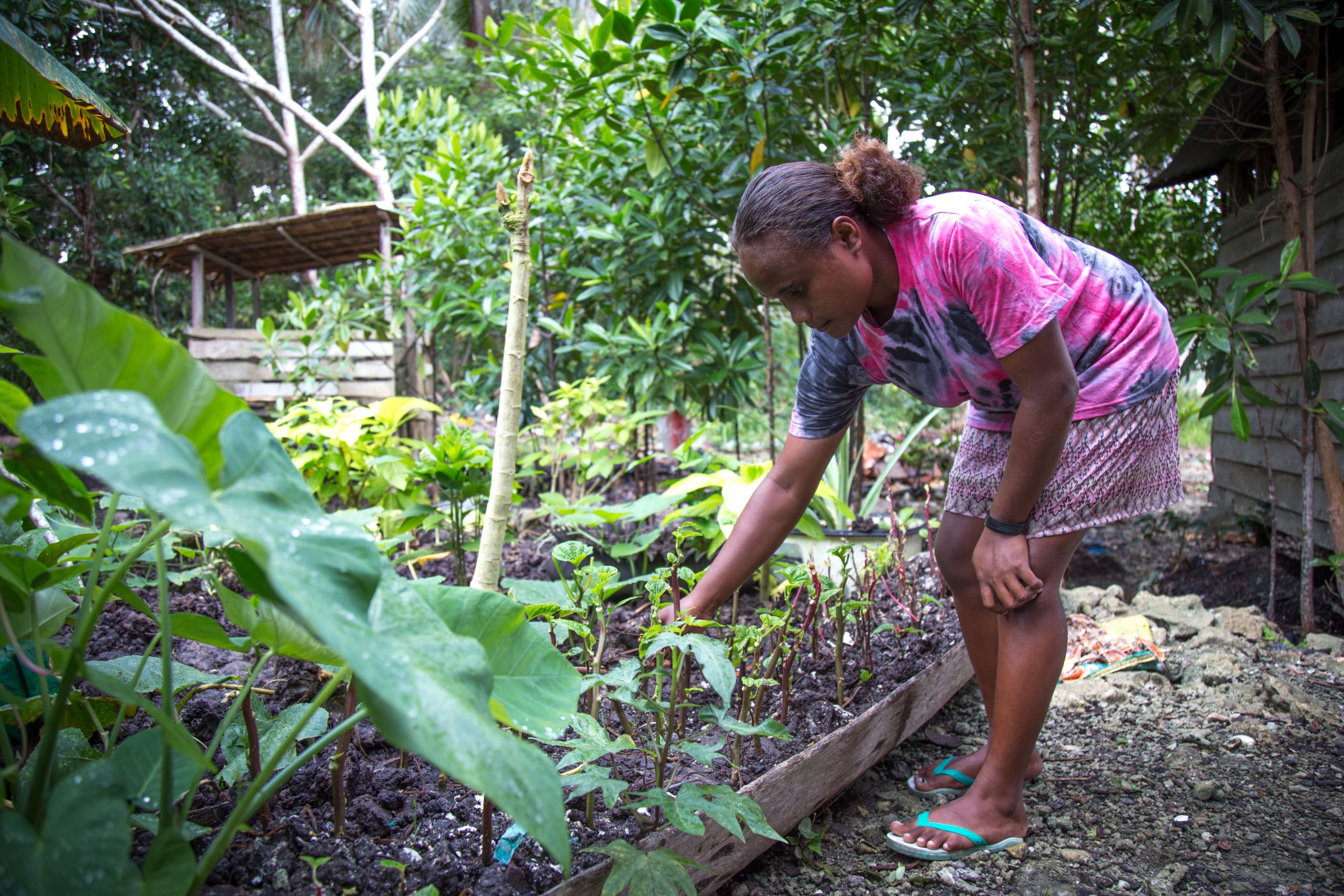
Diana tends to the garden, where families grow vegetables are often destroyed by the sea water
Diana tends to the garden, where families grow vegetables are often destroyed by the sea water
The crops we grow in our garden, like potatoes and cassava, are badly affected too.
I often sit in front of my family house feeling the breeze from the wind and watch the waves splashing against the rocks around our home.
I feel sad knowing that the people in my village, including my grandfather and some members of my family, contributed to the problems we are having.
They collected big stones from the reefs around our village to use to build our homes. When these stones were in the water, they helped to break down waves as they came into shore.
Now, when bad weather comes, the waves wash straight through to the front of our homes and I feel so scared.
The women in my village also cut down our mangrove trees to use for firewood. These mangrove trees used to help stop strong winds from destroying our homes.
The weather pattern here is abnormal now. It’s not really following the seasonal patterns I have seen before.
Anything can happen at any time and we live in fear.
The government of our country has promised to help people like us, who live in coastal regions, but they have failed to do so.
We want to fix these problems ourselves but we need help.
World leaders should take climate change seriously.
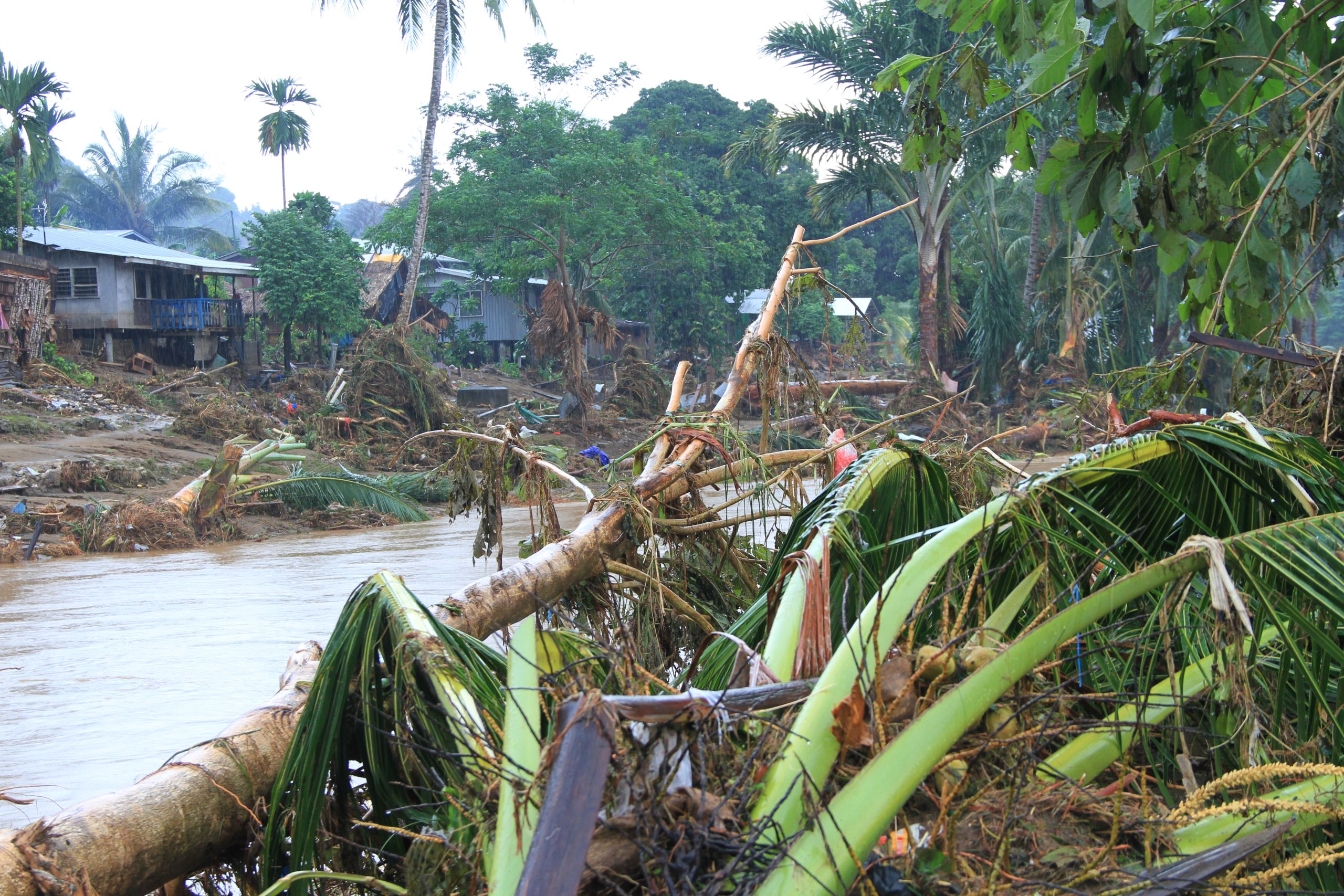
Destruction from flash floods in 2014
Destruction from flash floods in 2014
Extreme weather and rising sea levels are already affecting our food, water, health, and livelihoods. In the not-so-distant future, they will wipe away our homes.
Climate change is making our islands uninhabitable. If nothing is done, this will result in a huge body of climate refugees who have no place to seek shelter.
The young people here, like me, are the ones who will be the most affected.
So let us join our hands and work together to try to solve this crisis. Let us protect my village, my island and my country.
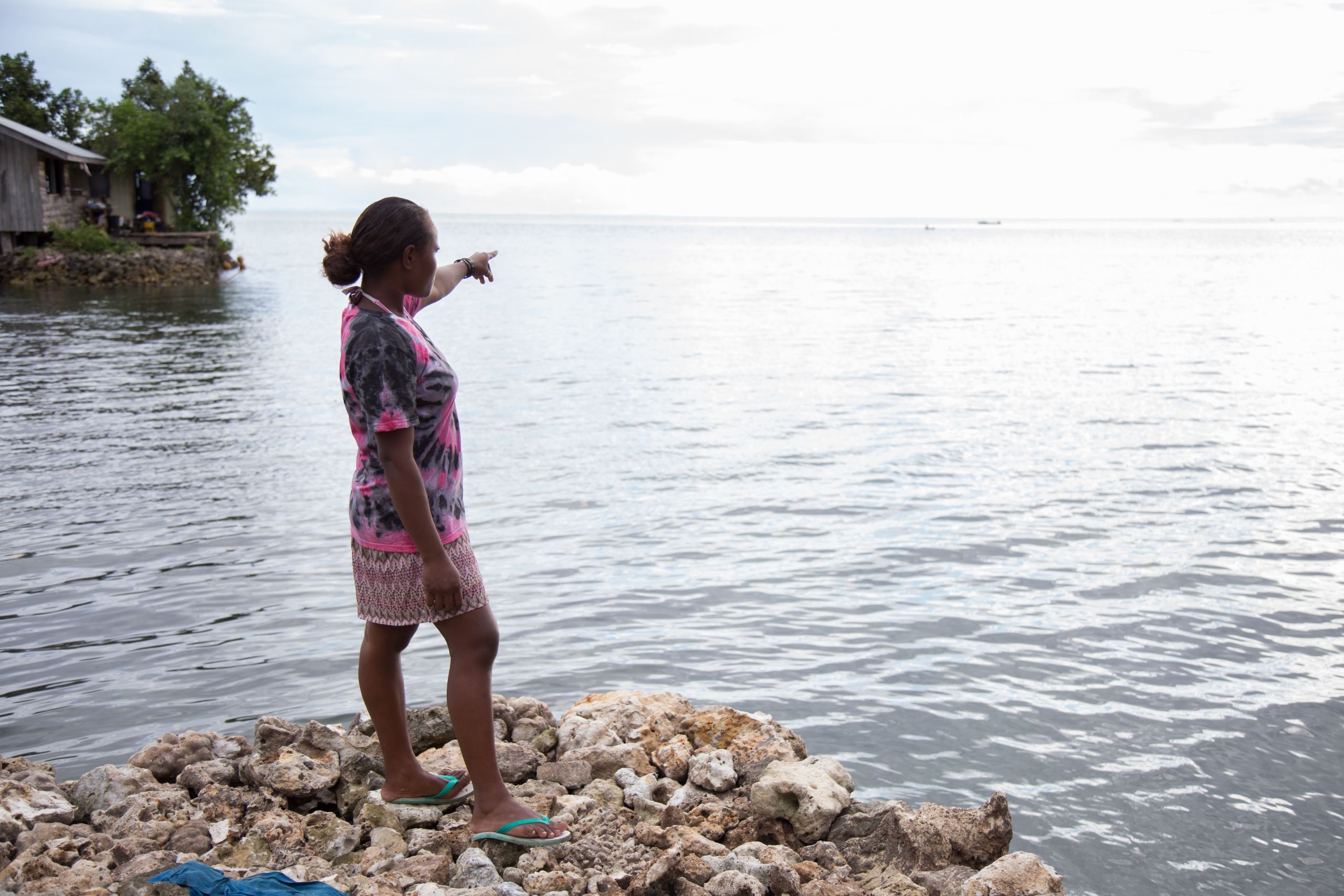
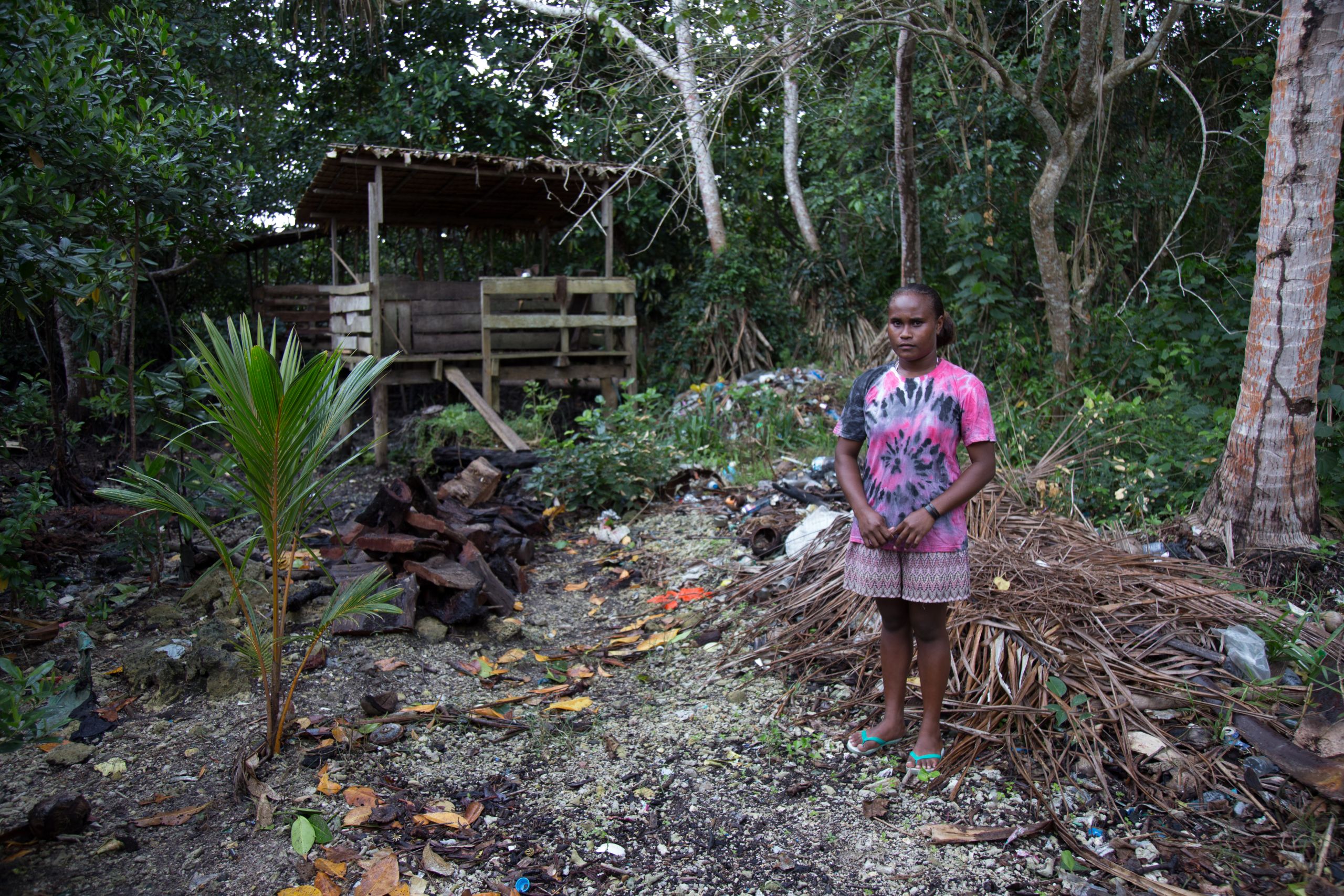
Diana says she and many others feel fearful about the future
Diana says she and many others feel fearful about the future
"My grandfather said his generation experienced flooding, but never like this."
By Corrine Roina, 17
It was the evening of February 20, 2016, when there was a very strong wind which began to blow and caused the leaves from the trees to fly all over the place.
Dark clouds began to form and thunder rumbled close by.
The rain fell heavily and the river started to flood.
My mother told everyone to go to bed. When we were all asleep in the middle of the night, I heard a rushing sound of water running heavily and quickly. My mother was panicking because the water was rising and overflowing through the kitchen.
My family woke up and rushed to the neighbouring houses for safety. My mother, my two brothers and I quickly gathered money, batteries, a few clothes, bags of uncooked foods and the radio.
We didn't know if we'd be coming back.
At that moment I was so scared, because it almost flooded my home. I told my mother how serious the situation was. We needed to move further inland because we lived close to the river.
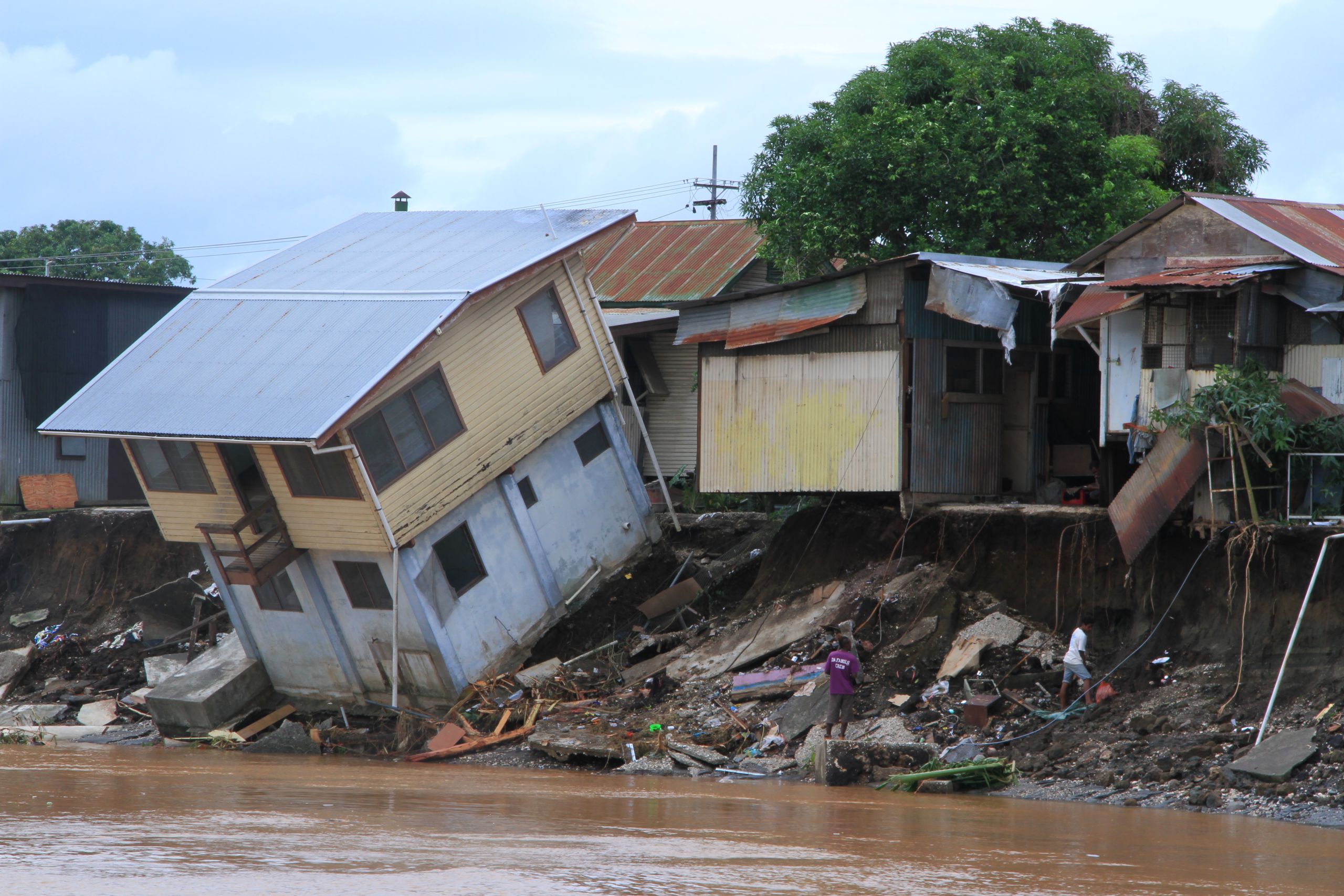
Flash flooding causes devastation (Pic from 2014)
Flash flooding causes devastation (Pic from 2014)
My grandfather said his generation experienced flooding, but never like this.
The river is now five metres wide and dangerous.
When it starts to rain heavily and the river starts to flood, I know what to do and where to go for safety. But we cannot keep rebuilding each year after the rainy season.
We need global action to stop polluting the atmosphere and help to protect our world.
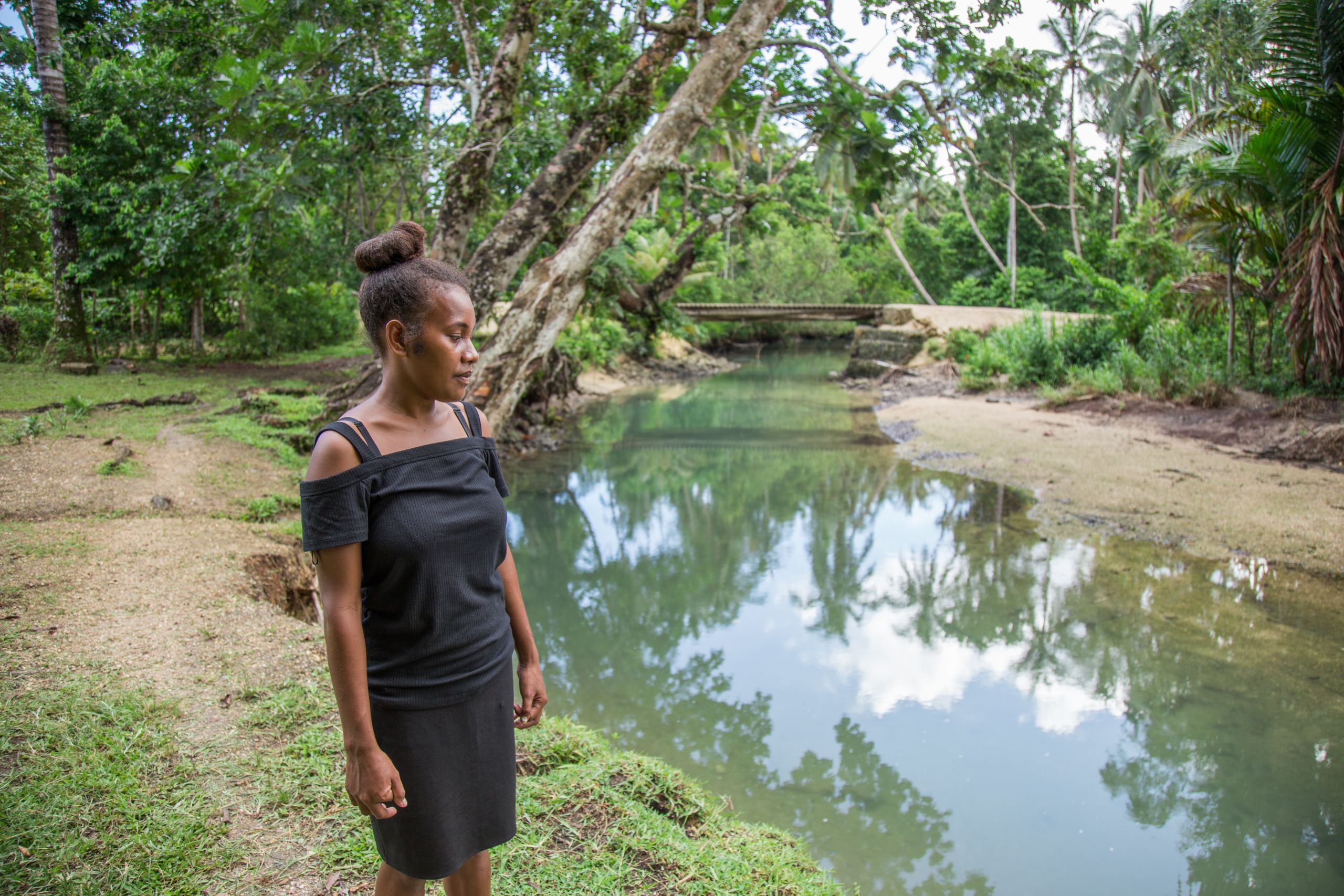
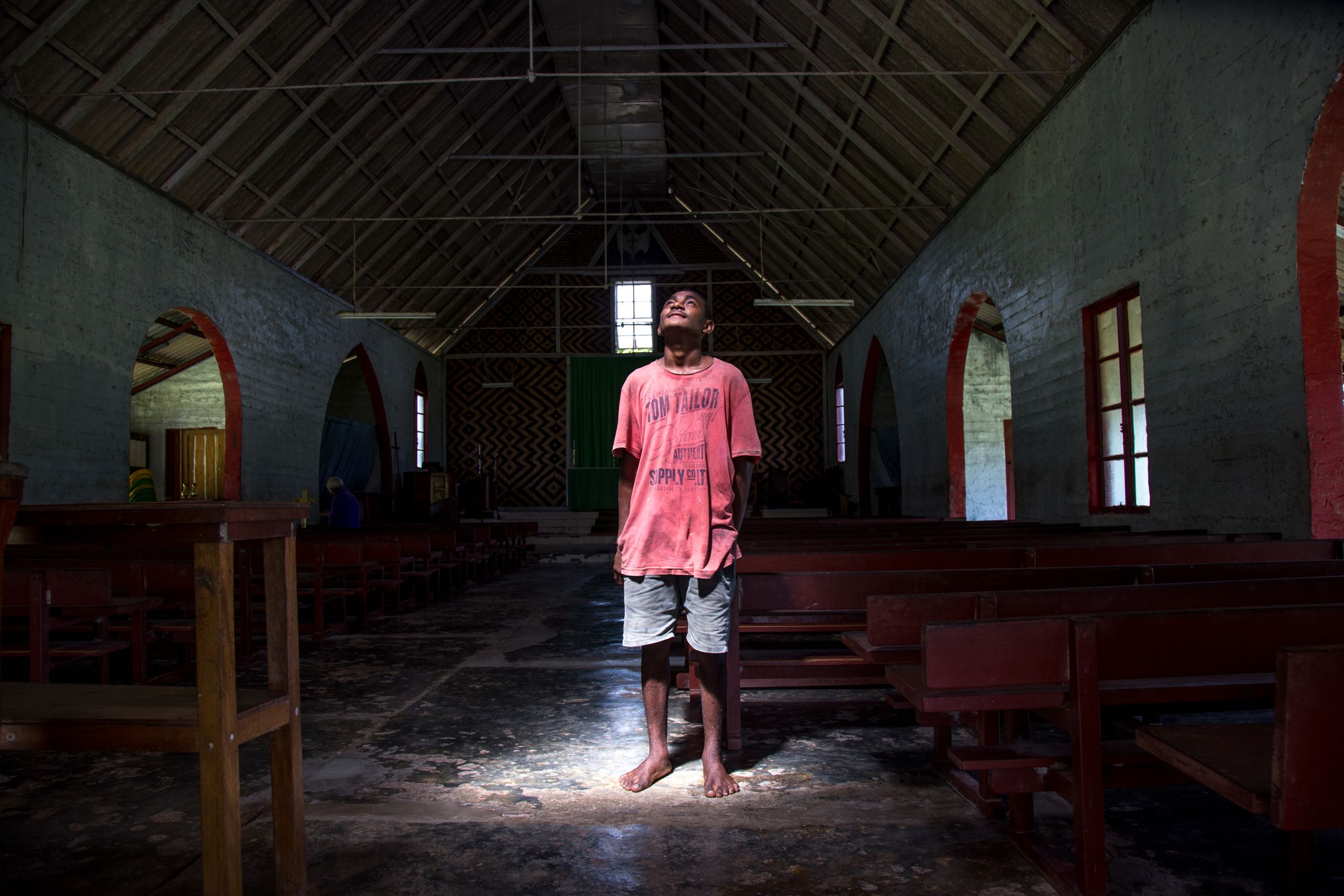
Timothy looks up at the light in his village church where people go for shelter during cyclones and other natural disasters
Timothy looks up at the light in his village church where people go for shelter during cyclones and other natural disasters
"We were stunned at how quickly the weather changed as our new year celebrations came to a sombre end."
By Timothy Windbreak & Cinderella Sia, 15

On New Year’s Eve 2018, our coastal village was torn apart by a devastating cyclone.
Before it arrived, the sky was crystal clear, the stars were twinkling and the calm ocean didn’t make a sound.
It was a perfect atmosphere for the celebrations; the smell of the roast chicken filled the air as our brothers and sisters drank and danced to music.
It was a truly joyful night until 30 minutes before the big countdown, when the weather suddenly changed.
Dark clouds filled the sky and a strong wind blew hard against our houses.
Huge storm surge waves roared and rolled speedily up the shorelines up into the mainland.
People were scared because many of our homes were made of temporary materials and were old – they would not survive a cyclone.
Waves smashed against the coral reefs and huge rocks from the sea were hurled towards the land, causing rubbish and debris to wash up on the shore.
Coconut trees were uprooted and thrown down, many coastal homes were destroyed.
The sea water and the rain water poured into the low-lying villages.
We were stunned at how quickly the weather changed as our new year celebrations came to a sombre end.
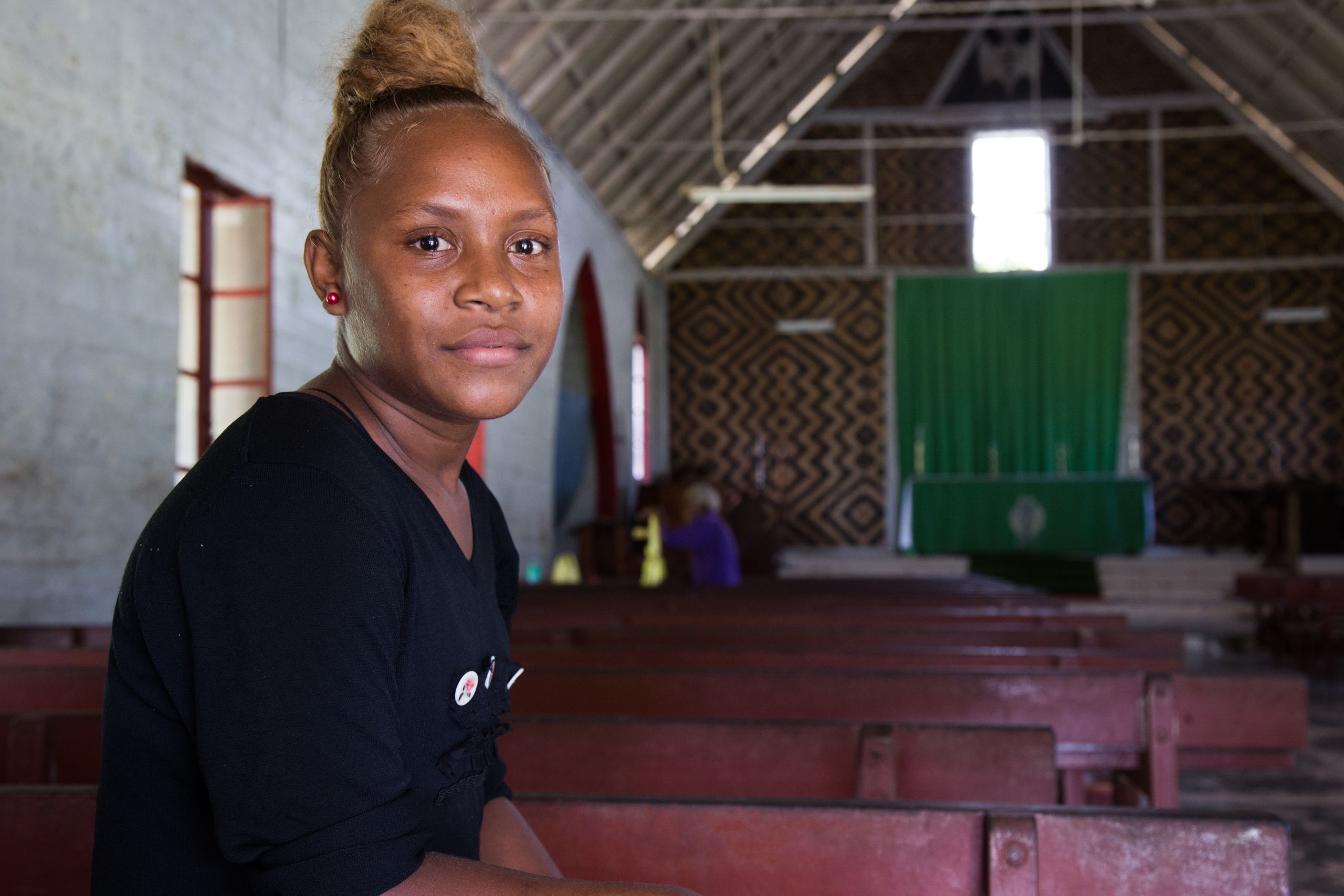
Cinderella Sia takes cover in the village church
Cinderella Sia takes cover in the village church
Some people were running around in a panic, carrying their luggage and other necessities to the church building, an evacuation hall for the community.
Others searched for higher grounds but some of us waited in our homes, shivering and scared.
Suddenly, the roof of our house blew off and the walls were damaged by the huge rolling waves, so we fled to the church for cover.
The storm battered our land all night.
On New Year’s morning, we broke cover and found the sea was calm and the winds had dropped, but our beautiful white sandy beach was covered with uprooted corals, dead fish and tree branches.
We lived temporarily with neighbours while we started to clean up and set up a new site to build a new house.
It took three months to rebuild our home, which we feared would be torn down again by the weather.
In response, the chief of the village and our people planted trees along the coastlines to stop flooding and dug wide drains behind the village to allow water to flow slowly to the sea during rainy seasons.
But there is only so much we can do to keep this weather at bay.
We expect weather like this during our rainy season, but in the past 40 years cyclones like these have become more intense and more destructive storms now form more often.
Warming oceans could also drive more dangerous cyclones like these.
We worry because it’s likely they will get bigger and more deadly as time goes by.
That’s why we need to come together and act now, before it’s too late.
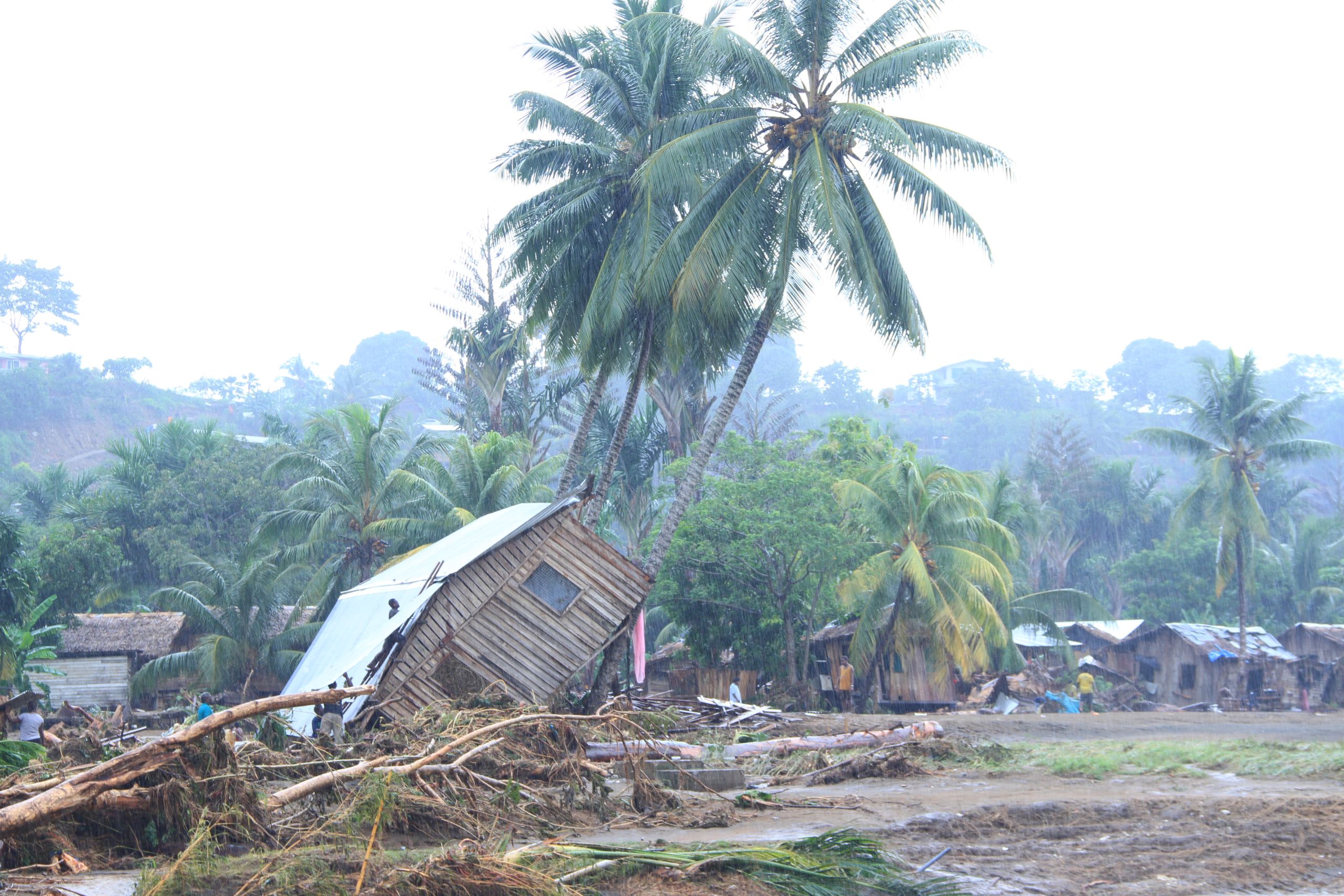
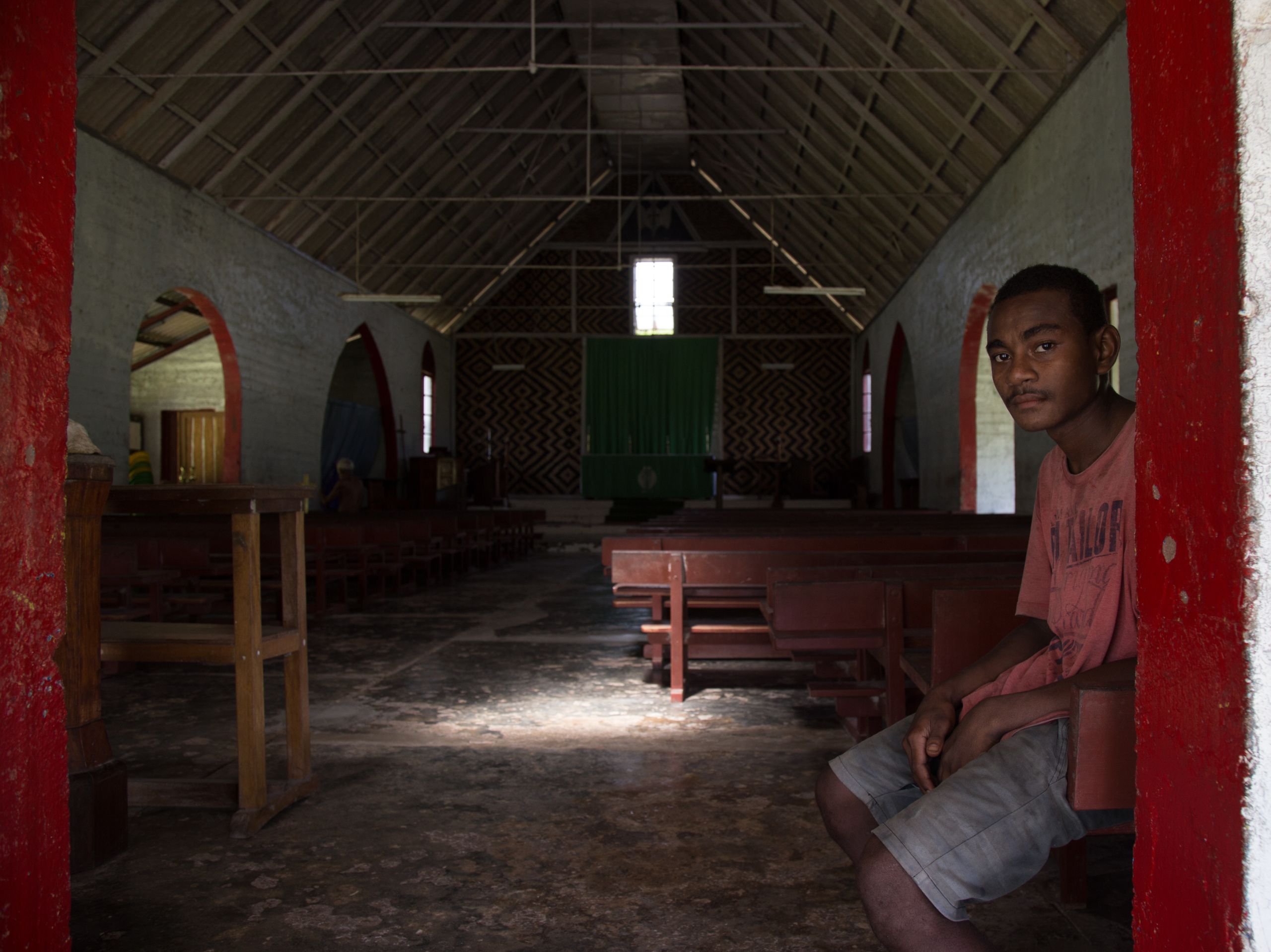
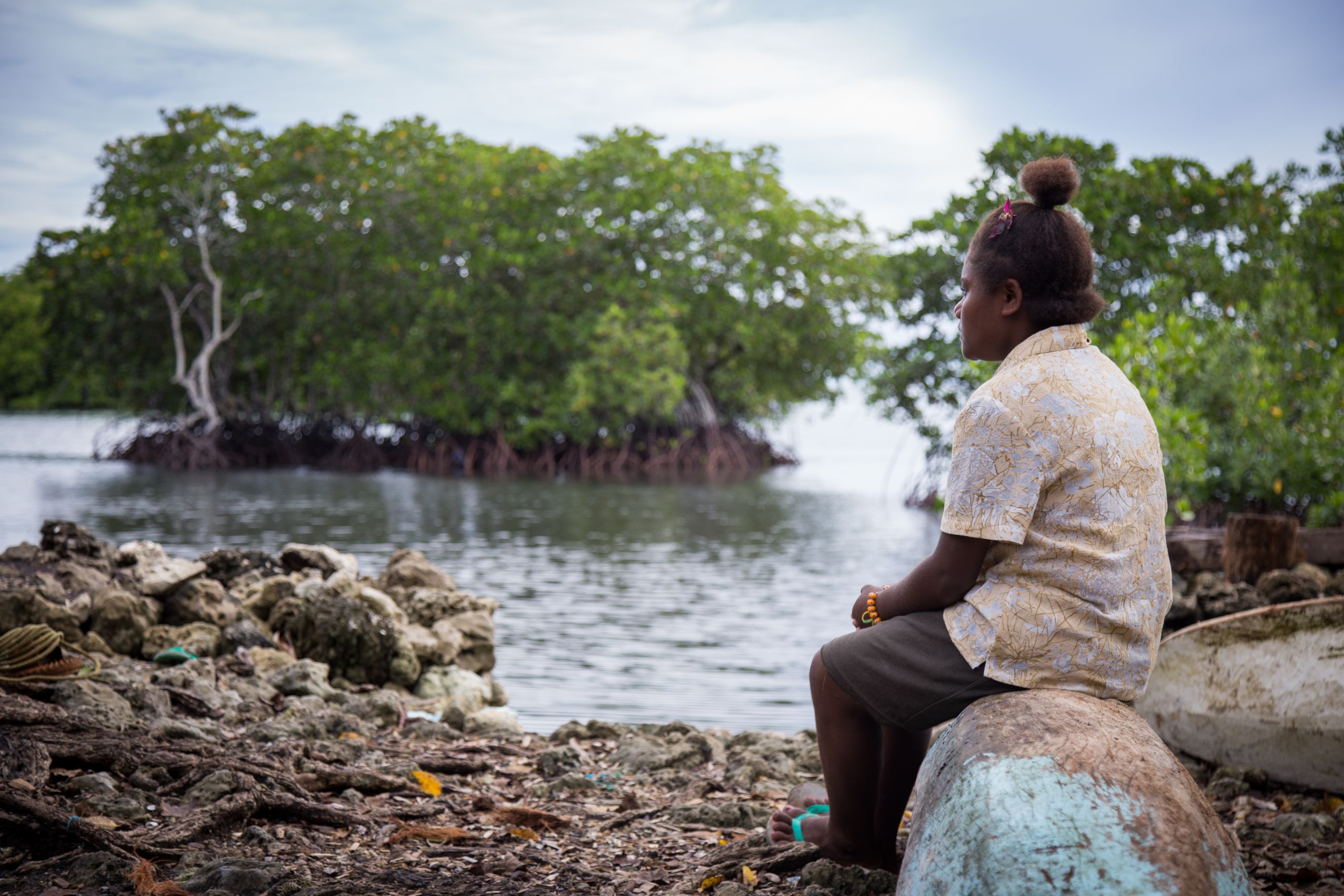
Jerma looks out at the sea at low tide near to the spot where her brother, Michael, tragically drowned
Jerma looks out at the sea at low tide near to the spot where her brother, Michael, tragically drowned
"My family and I believe sea level rise contributed to the deaths of my two disabled brothers, who were pulled into the water and drowned."
By Jerma Batzy, 15
With its sandy white beaches and crystal clear waters, the Solomon Islands looks like paradise.
But many of us here have lost our homes and, in my case, even family members because of the climate crisis.
My family and I believe sea level rise contributed to the deaths of my two disabled brothers, who were pulled into the water and drowned.
The sea used to be 50 metres away from our house but as time went on, I could see the water coming closer and closer, until it was eventually right on our doorstep.
My worried parents told us not to go down to where we used to play but in the summer of 2014, my 10-year-old brother Michael, who could not walk properly, was sitting on the sea wall where our grandparents used to read stories to us.
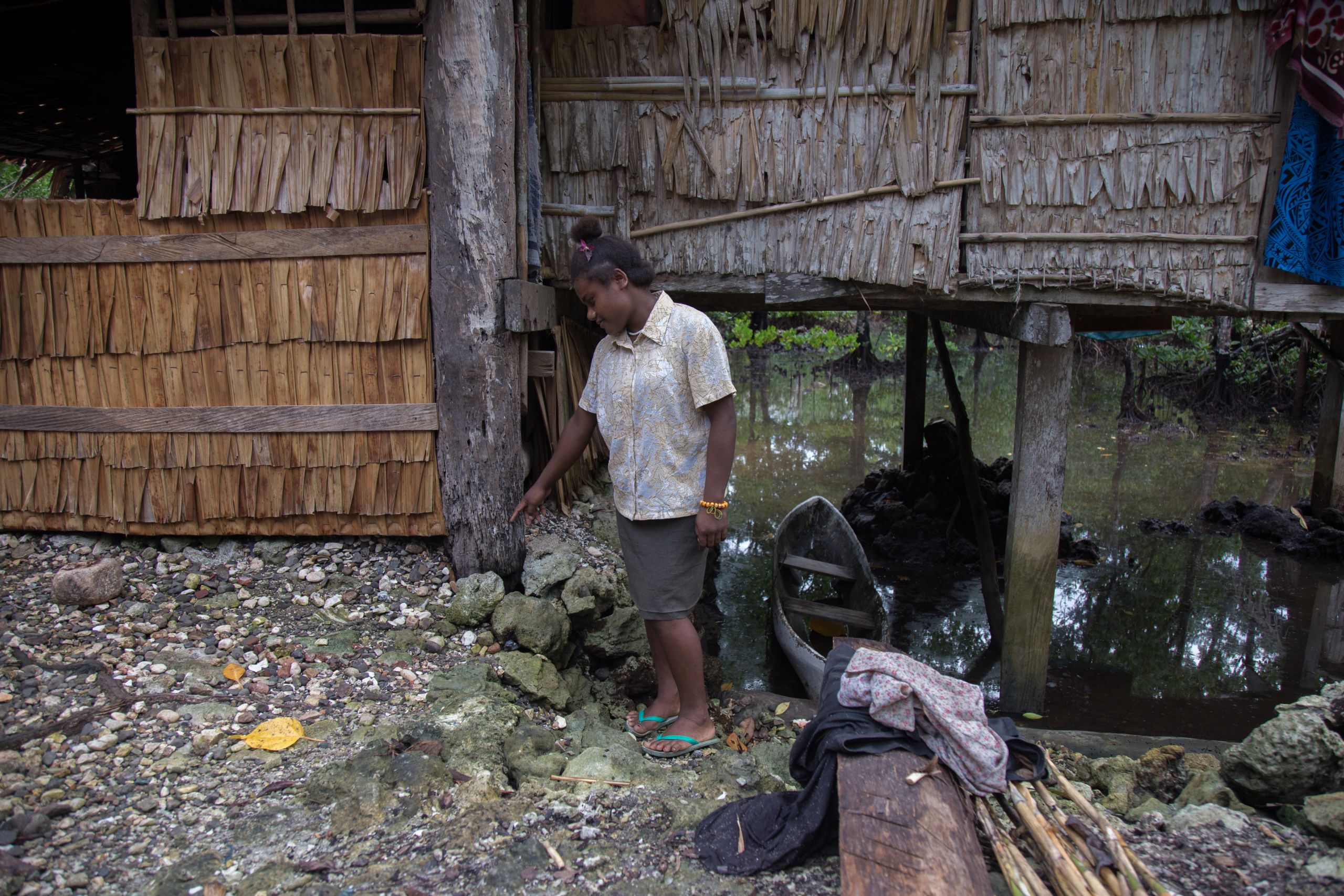
The sea comes right up to the house, where Jerma is pointing to
The sea comes right up to the house, where Jerma is pointing to
During an exceptionally high-tide, Michael was pulled into the sea and drowned.
Tragically, my six-year-old brother Dona also drowned when he was crawling along the path by the house and was swept into the water by the tide in 2017.
The sea never used to come up so close and now my home is a constant reminder of the loss of my brothers, whose graves are in our garden.
Sometimes during high tides my village in Langa Langa Lagoon, Malaita province, gets covered with sea water.
The root crops and vegetables for our meals get destroyed by the salt water so all we can eat is rice, tinned food, and noodles.
This affects our diet and our overall health.
Our village sits on a man-made island, many of which have been around for centuries, built by our ancestors from rocks on top of shallow reefs.
Some of these islands, like my parents’ and grandparents’ former homes, are now submerged.
In 1986, they had to leave their old home after one of the most deadly cyclones in Solomon Islands history struck.
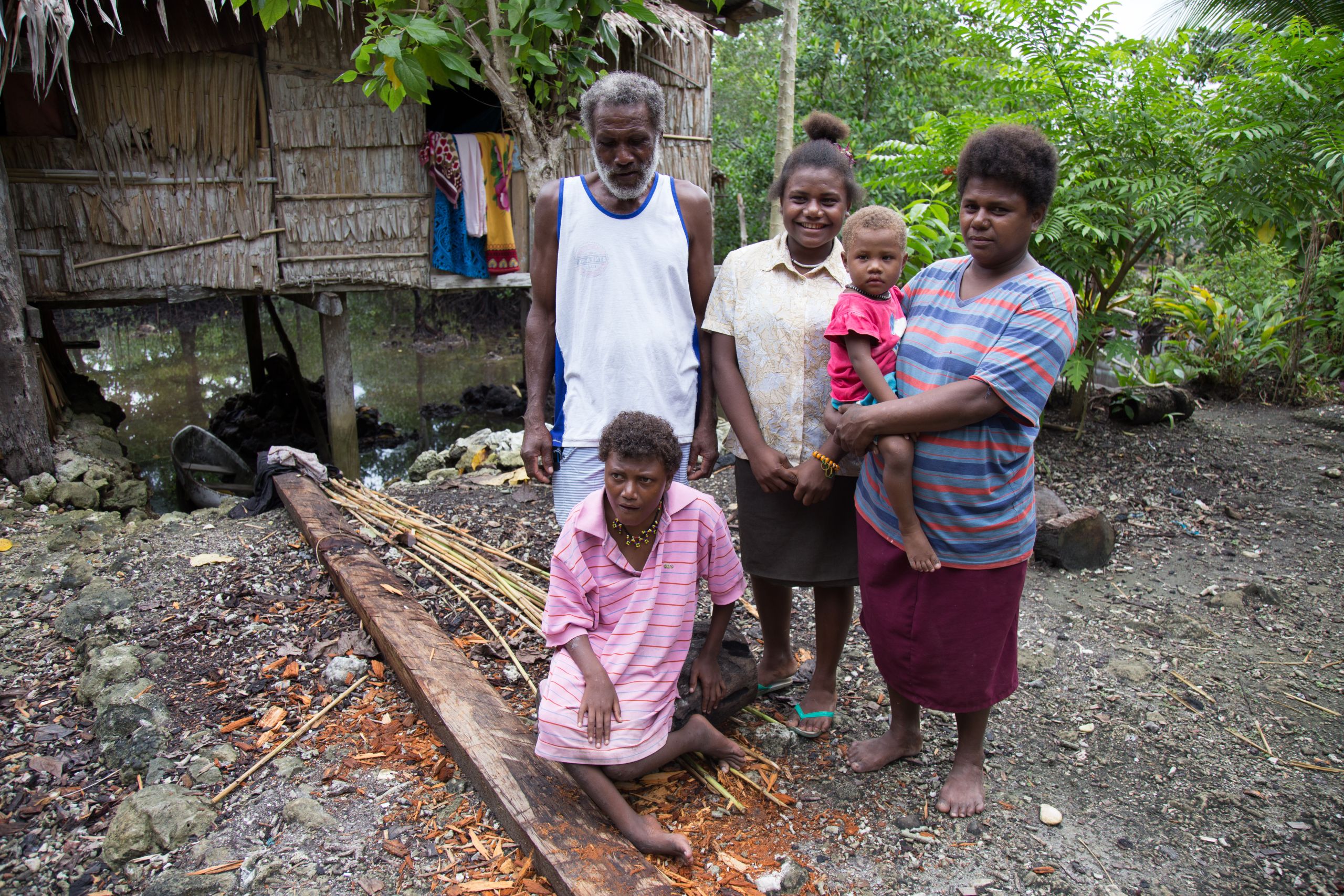
Jerma with her mum, dad and two younger siblings
Jerma with her mum, dad and two younger siblings
Now all that remains are a few rocks poking above the water.
After the cyclone, my family set up home on a new island where my brothers, sisters and I used to play safely among the mangrove trees and the coconuts.
Now everywhere I loved as a child is underwater.
I do not feel safe here but there is nowhere else for us to go.
Many families relocate to higher ground, but this causes conflict over land ownership.
Sea level rise in the Solomon Islands is happening at a rate of almost three times the global average, at around 7-10mm per year since 1993.
And while the rising seas cannot be blamed on climate change alone, it provides a window to the rest of the world of what is to come in the next 100 years if we do not take urgent action.
Activities like logging, cutting mangrove trees for firewood and household cooking contribute because they threaten our food security and ecosystems.
But when it comes to global emissions, our country contributes very little compared to the western world and yet we are the ones living with its effects.
Climate change is a global issue which cannot be addressed by an individual nation.
For us it is a daily concern for our lives.
Our people are strong, but the land we live on is vulnerable.
I can only hope my home in paradise will still be here in 50 years time.
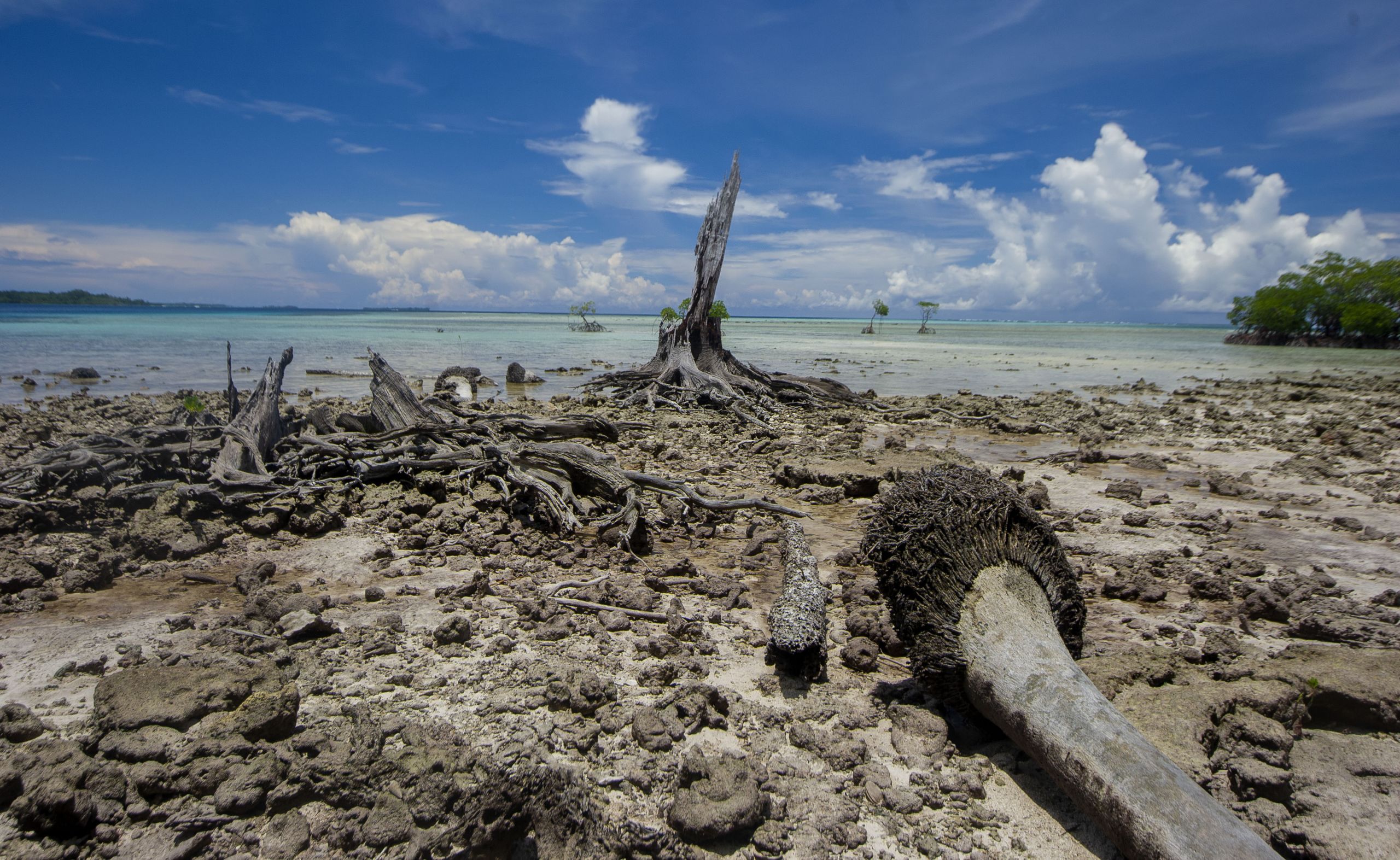
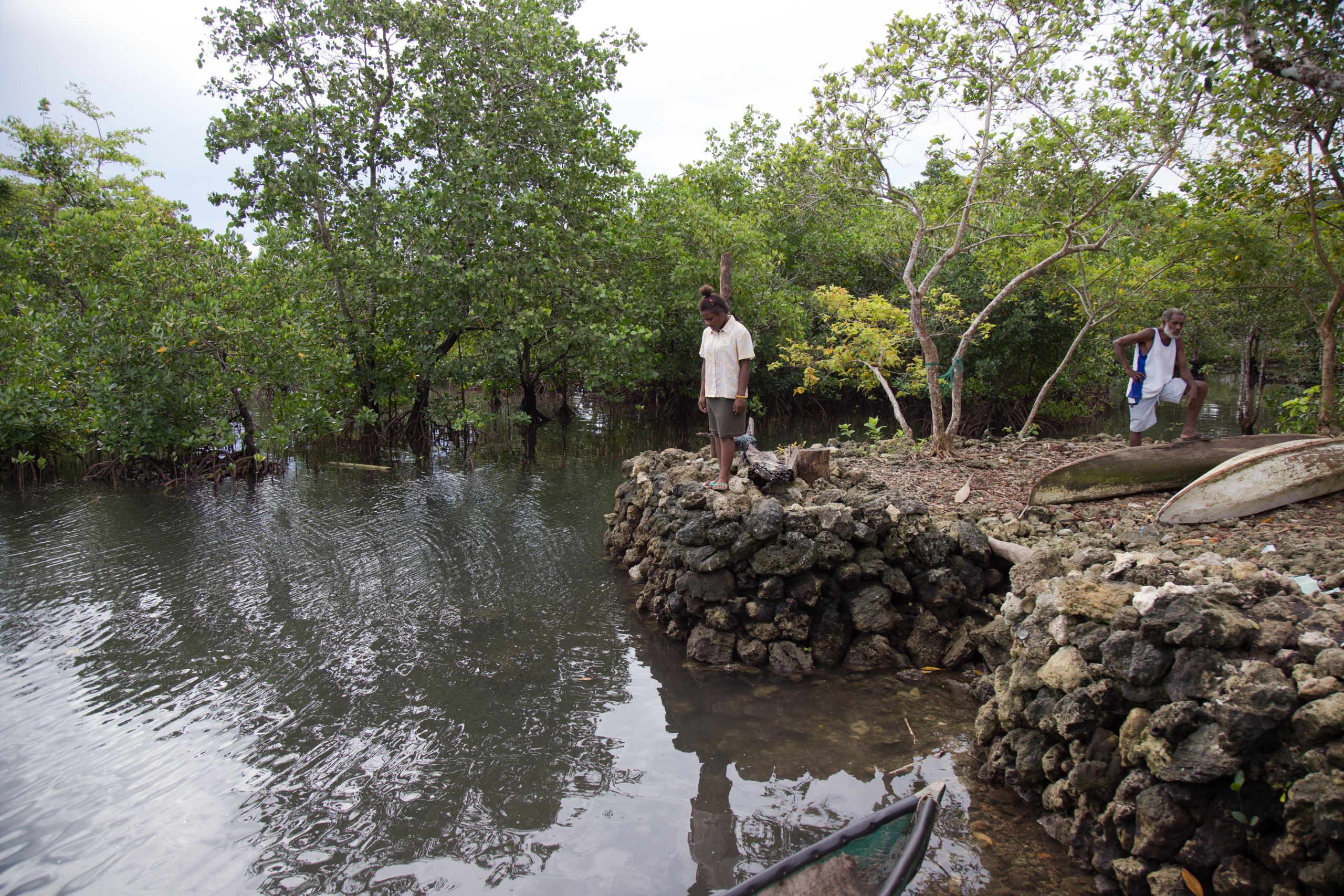
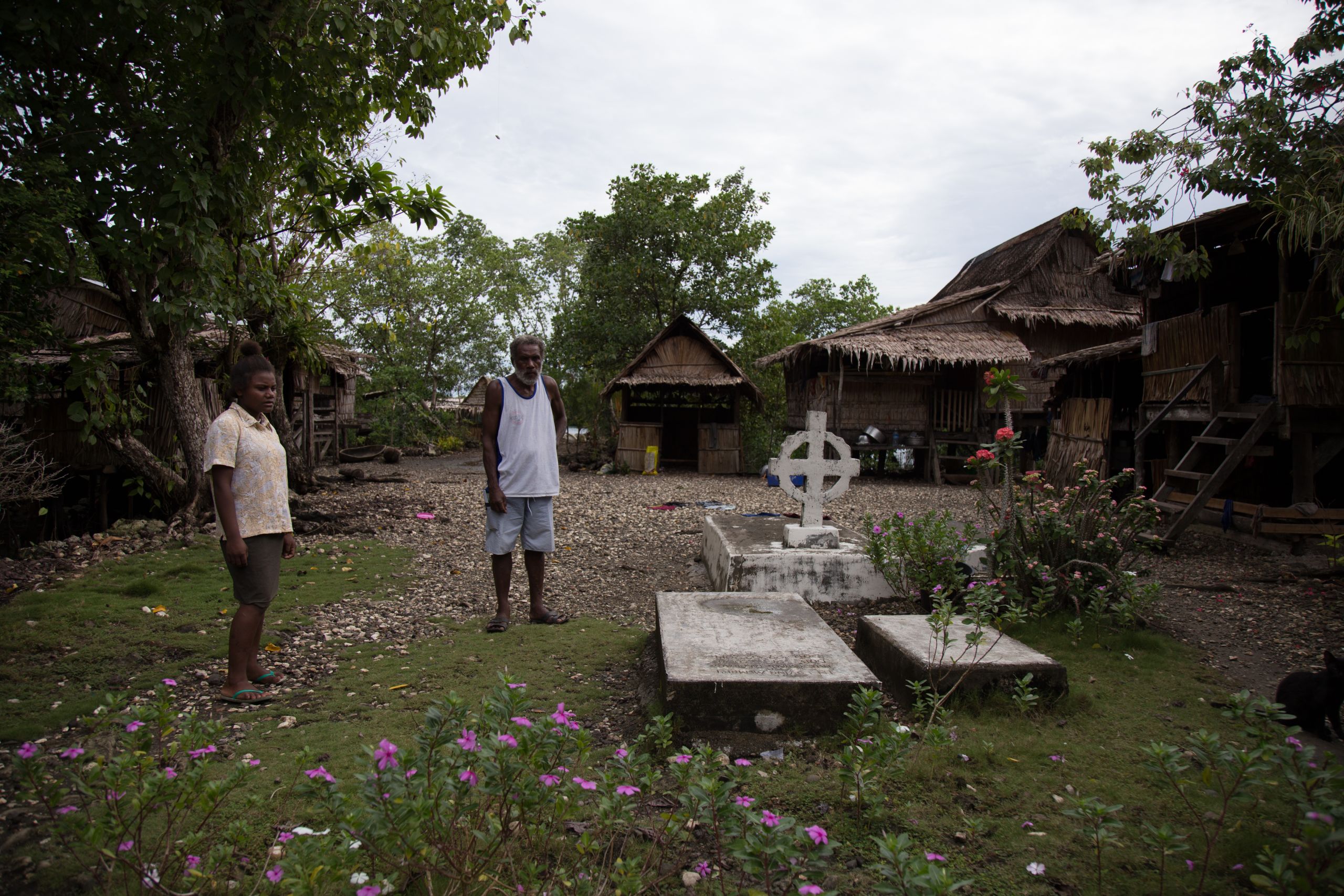
Jerma and her father stand beside her brother's graves
Jerma and her father stand beside her brother's graves
"Lots of coastal areas like this have been flooded as the sea has continued to rise."
By Ian Rodie, 19
There used to be a natural pool near our plantation that my family and I loved visiting.
It was filled with fish, prawns and colourful sea creatures.
After work, we would spend hours having fun in the pool, swimming and splashing around.
One day, my cousins and I realised that it had been over a year since we had visited the pool.
We decided to go for a picnic and a diving trip.
When we arrived, we found that the pool had widened so much we couldn’t have our picnic because there was too much water.
The pool was now really deep as well. I could barely see any of the sea creatures.
I was so confused because I had never seen something like this before.
Lots of coastal areas like this have been flooded as the sea has continued to rise.
The trees and coconuts that would usually guard the coastline have been destroyed by the rising water.
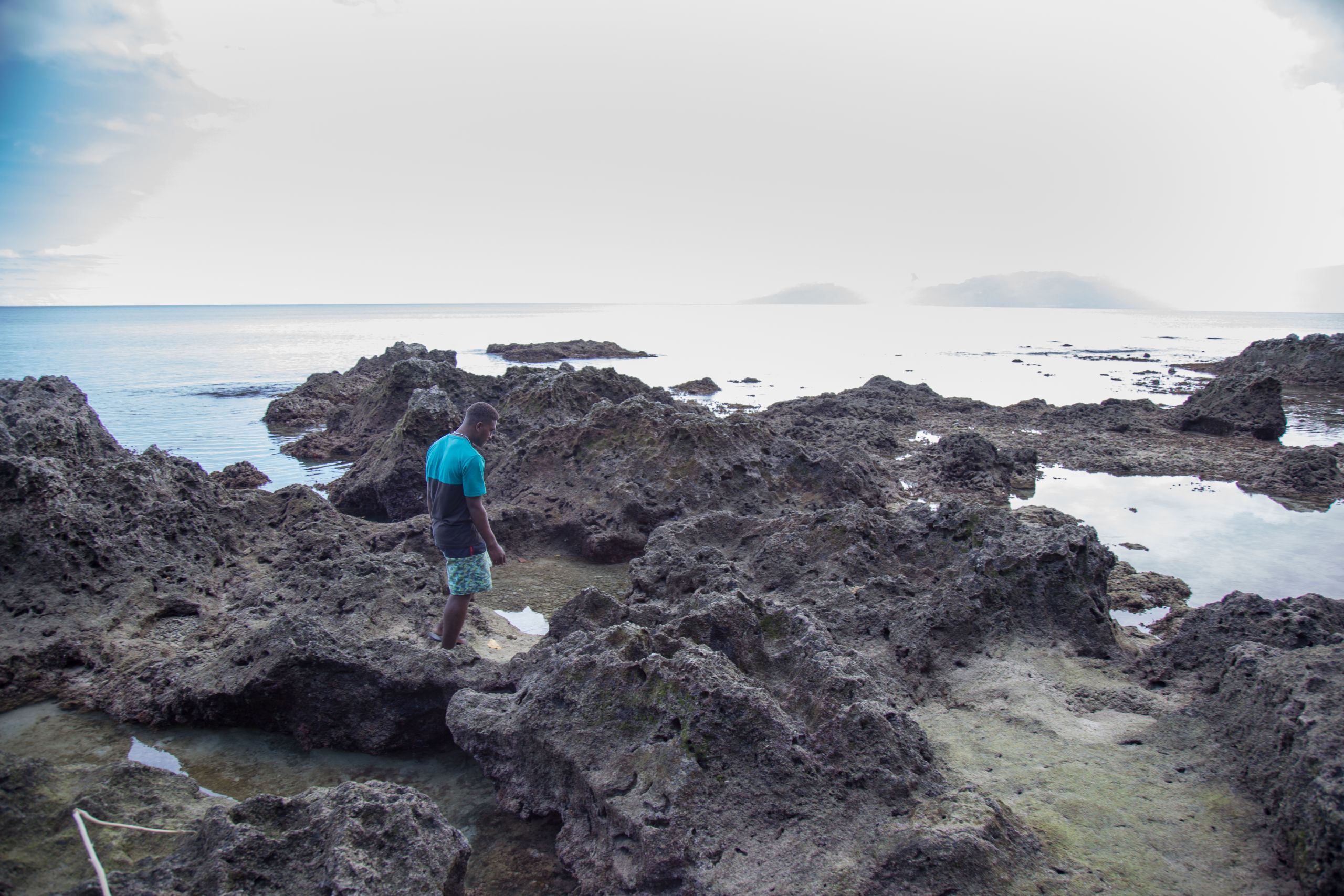
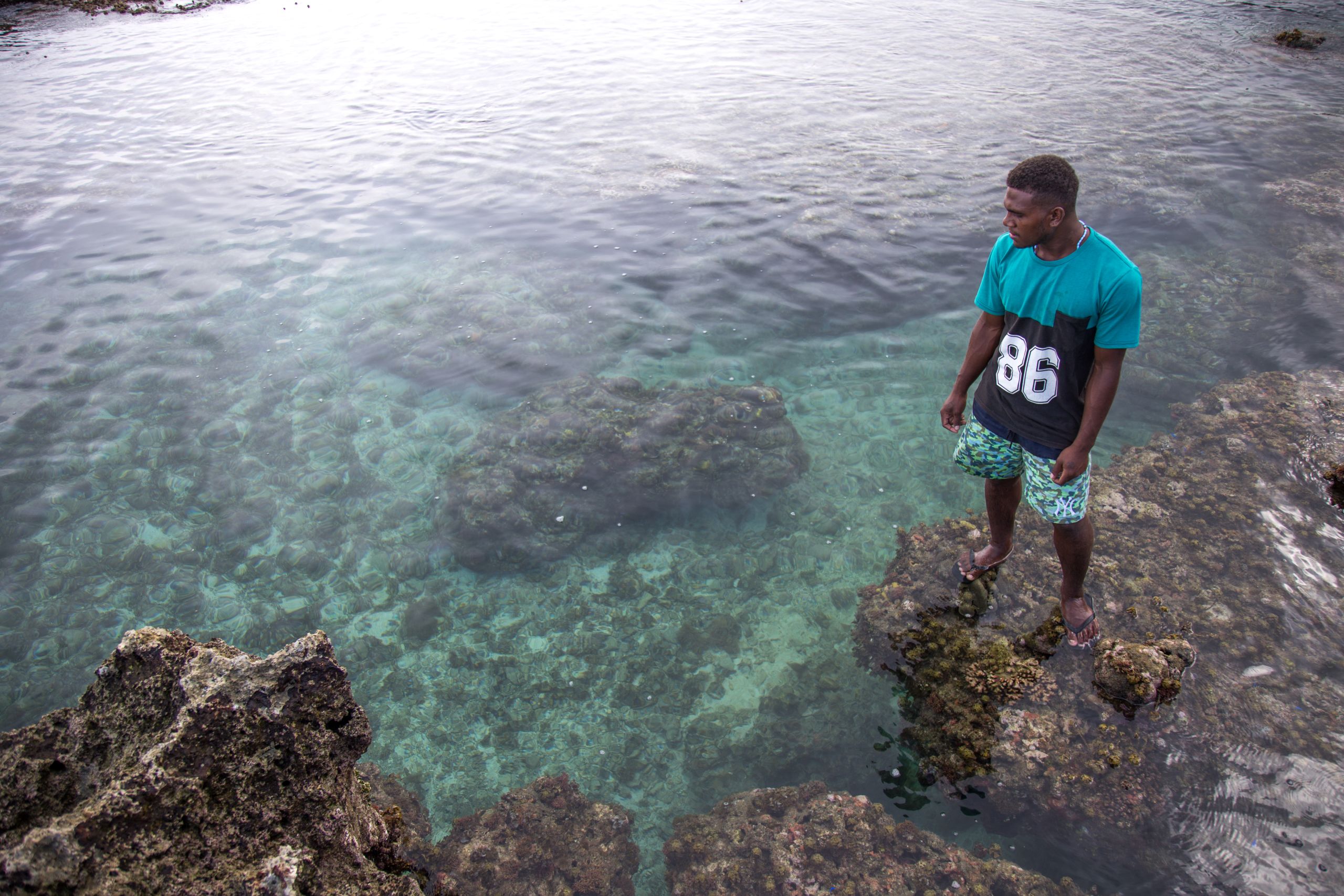
Ian explores a rock pool at low tide
Ian explores a rock pool at low tide
"Many of us miss days of school because we are so tired from collecting water."
By Mathew Toli, 16
Every morning before school, all the children in my small village collect water for our families to use for washing and cooking.
In the past, it was much easier. We took buckets to the wells in our village and got water from those. Nowadays, the sea has risen so much that the wells are all full of saltwater.
We can no longer use the water from them.
Now, it is really hard to find fresh water. We have to walk or paddle long distances to find another source.
In the afternoon, after school, we have to collect water again. Many of us miss days of school because we are so tired from collecting water.
We need a water supply in my village.
We will have the time and energy to attend school.
This will really help children like me and our families.
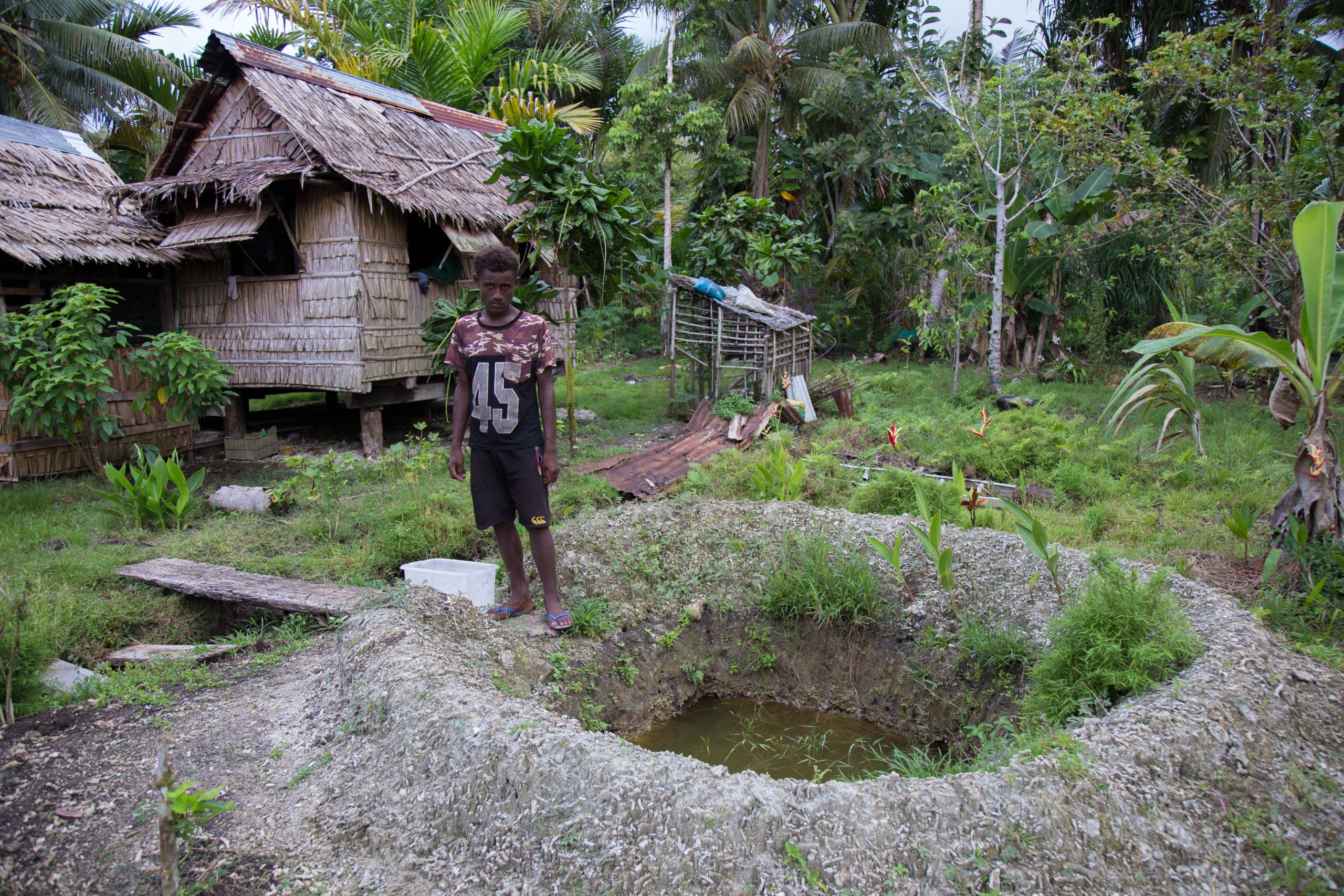
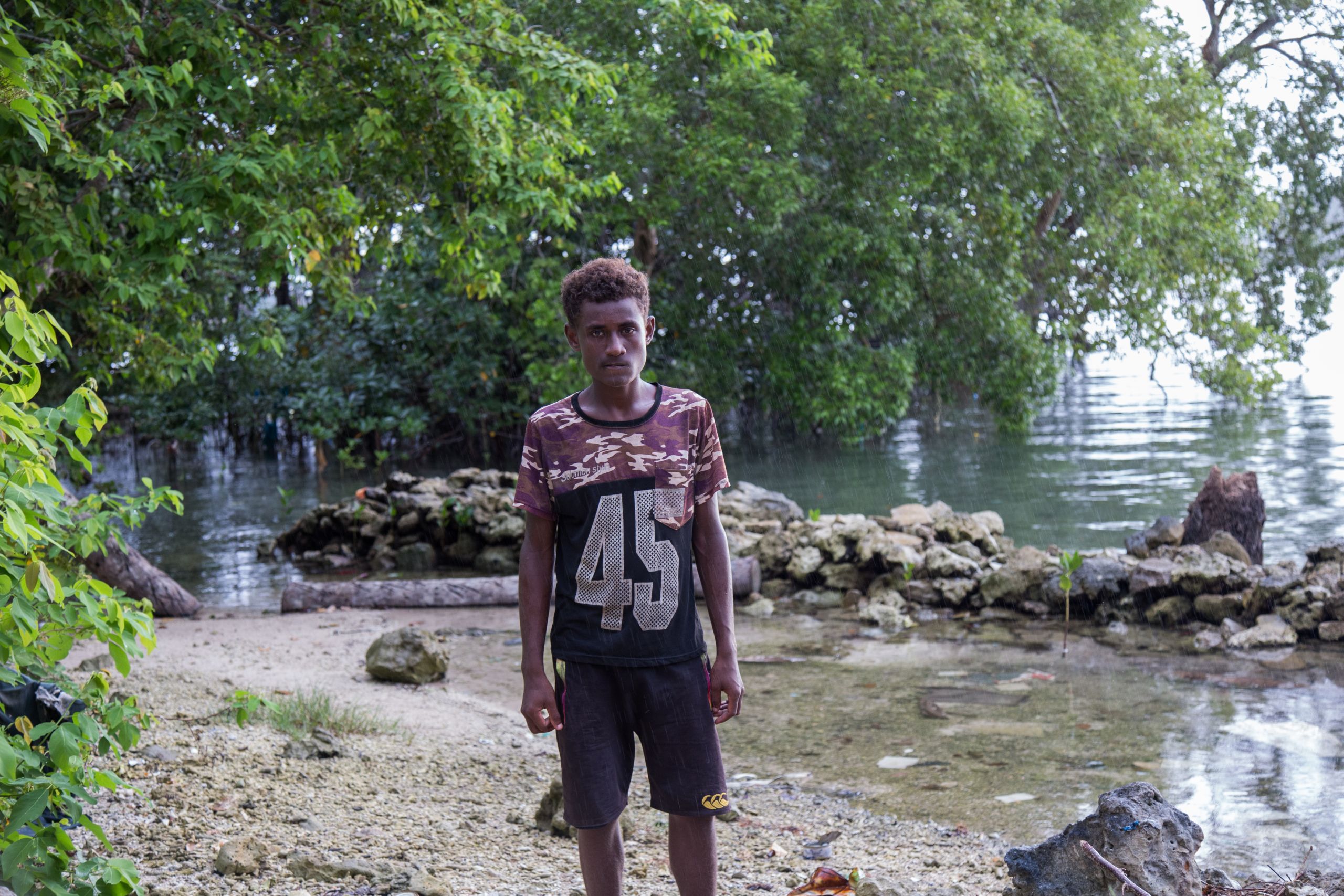
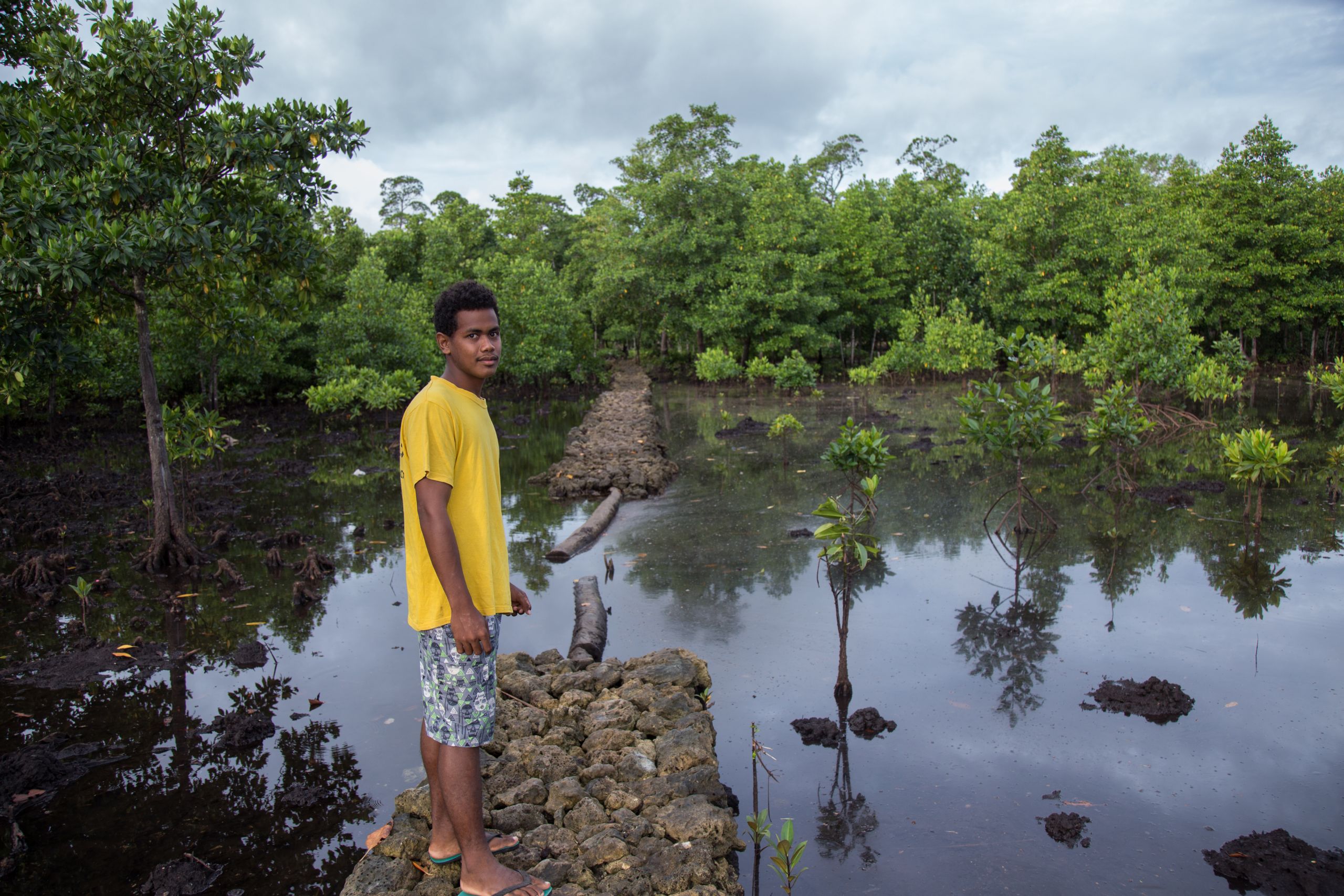
Junior Kevin next to the path his family used to take to church, which is now impassable
Junior Kevin next to the path his family used to take to church, which is now impassable
"The track to school has completely disappeared. Today, it's just a swamp filled with muddy water. "
By Junior Kevin, 17
There’s one Sunday in October 2012 that I remember clearly.
That morning, my family and I were going to church. The walk there usually took us a few hours.
The track we walked on was the same one I walked along to school. It took us past our garden, where we grew crops and fruit trees.
On our way, my father was telling us stories of when he was younger. He told us about how he loved walking along this same footpath as a child.
After worship, my family were standing in front of the church telling stories and making jokes. I was sitting down and watched as the sea slowly rose up.
I turned my head and listened to my relatives laughing. A few minutes later, I saw the sea had completely covered the track.
There was only 30cm between the top of the wall I was standing on and the sea. I was so surprised and confused. My eyes opened wider.
I quickly ran over to my family to tell them what was happening. They already knew.
The sea levels were rising and the tides were beginning to submerge our islands.
I kept watching the sea as it continued to rise. We were stranded with no way to get home and I was so scared. Eventually, a boat came to collect us.
Five months later, the track had completely disappeared. Today, the area is just a swamp filled with muddy water.
We can no longer use it as a footpath to walk to church or school.
I do not know how we can get our footpath back.
I am scared that our island will continue to be submerged as sea levels keep rising.
We do what we can to survive, but we need support from the rest of the world to reduce the impact of climate change.
Soon, it will be too late.
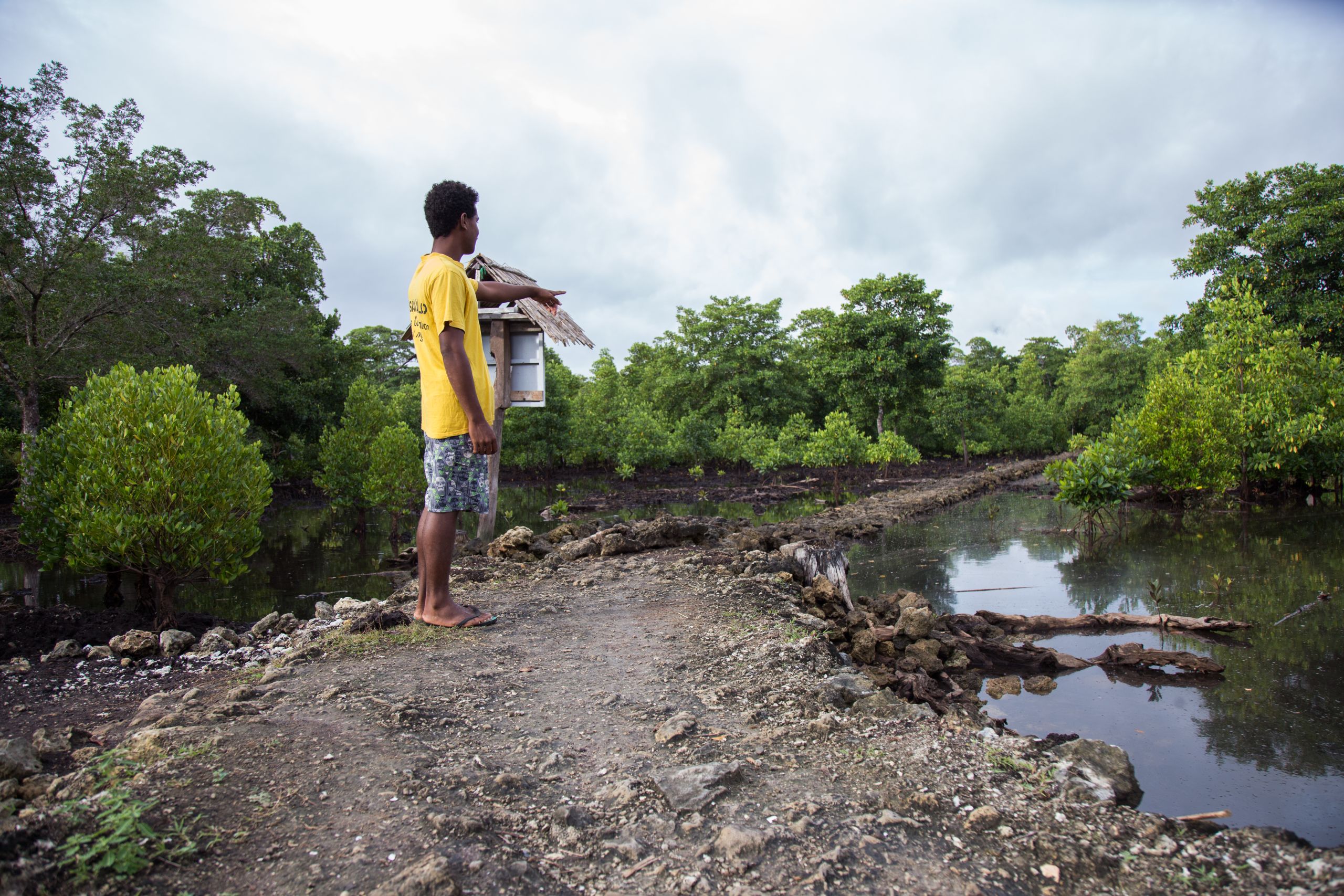
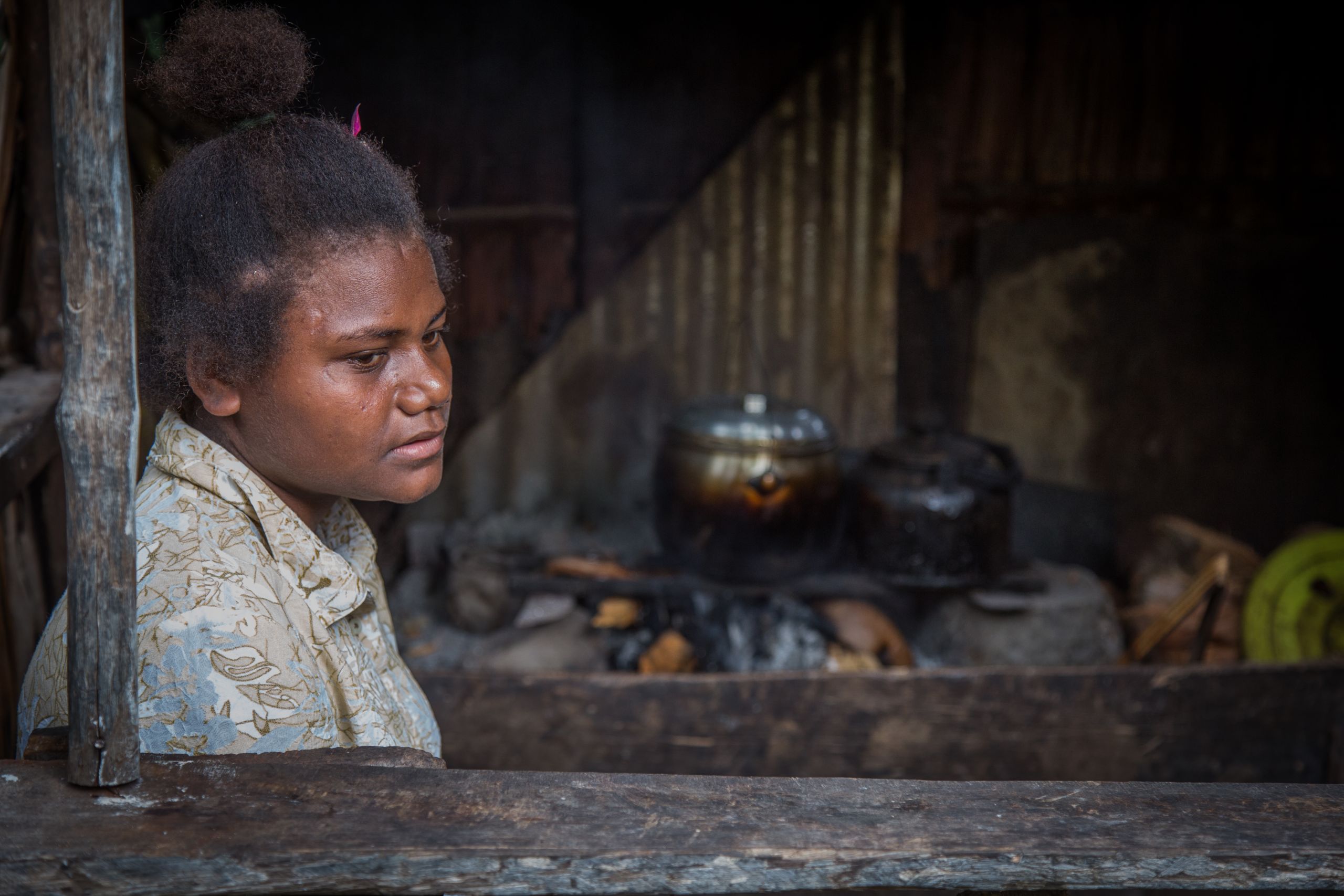
About NextGen International
The Daily Mirror’s NextGen International project builds on the success of our UK initiative, where we gave young people a voice and published the stories that matter to them.
Now the project has gone global, focusing on the climate emergency and empowering young people in six countries to tell their stories of how they have been affected by the crisis.
Other countries taking part in the project are Afghanistan, Nigeria, Brazil, Nepal and Mongolia.
The Mirror was awarded funding from the European Development Journalism Grants for the project, supported by the Bill and Melinda Gates Foundation.
Project lead Rhian Lubin
Editorial assistant Helen Packer
With special thanks to Save the Children Solomon Islands, Gladys Habu, Andrew Bouro & Collin Leafasia
*Some names have been changed for safeguarding purposes
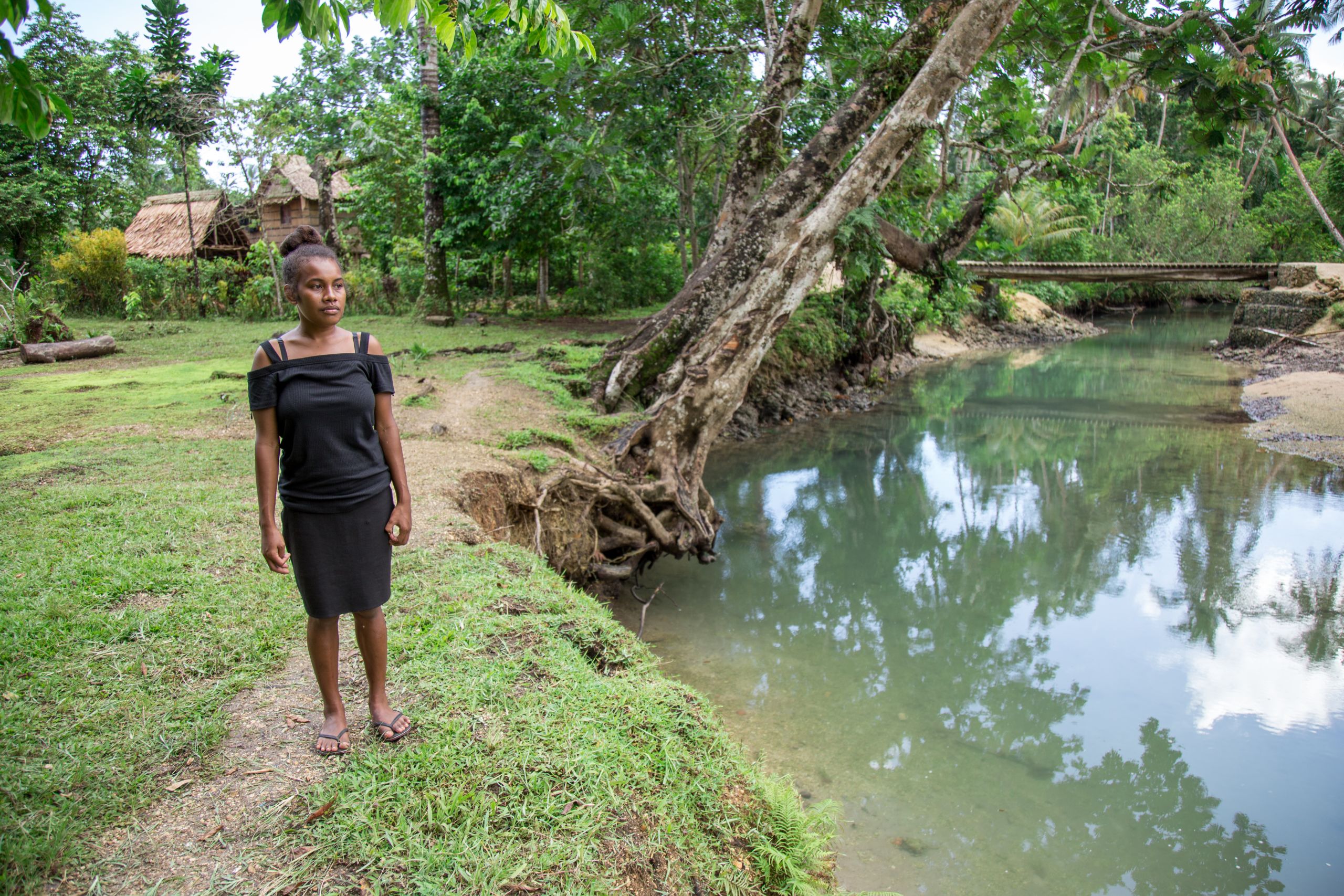
How you can help
To help build a better world for children around the world impacted by climate change, donate to Save the Children’s Emergency Fund
